
Operation Torch in a nutshell Date:- 8–16 November 1942 Location:- French Morocco, French Algeria Result:- Allied victory Territorial changes :- Anglo-American occupation of Morocco and Algeria, Free French control of French West Africa, Case Anton (Axis occupation of southern France)
Belligerents: Allied: Axis: United States Vichy France United Kingdom Algeria British Raj Morocco Navy only Australia Germany Navy only Canada Italy Navy only Netherlands Commanders and Leaders: Allied: Axis: US Gen Dwight D. Eisenhower Alphonse Juin US Gen George S. Patton Charles Noguès Rear-Adm Henry Kent Hewitt USN Frix Michelier Adm Sir Andrew Cunningham Ernst Kals Cdre T H Troubridge Lieutenant General Lloyd Ralston Fredendall General Kenneth Arthur Noel Anderson Logistics and Forces used - Strength: Allied Ground forces: Axis Ground forces: 107,000 troops 125,000 troops 35,000 in Morocco 210 tanks 39,000 near Algiers 500 aircraft 33,000 near Oran many shore batteries and artillery pieces Naval activity Allied Naval activity: Axis Naval activity: 350 warships 1 battleship (partially armed) 500 transports 10 other warships Total: 850 11 submarines Germany: 14 submarines Italy: 14 submarines Casualties and losses Allied: Axis: United States: 526 dead Vichy France: 1,346+ dead 1,997 wounded United Kingdom: 574 dead several shore batteries destroyed All Other Allies: 756 total wounded all artillery pieces captured Naval Losses Naval Losses Allied: Naval Losses Axis: 1 escort carrier (HMS Avenger) sunk with loss of 516 men
sunk by U-155 on 15th Nov 19421 light cruiser lost 4 destroyers lost 5 destroyers lost 2 sloops lost 2 flotilla leaders lost 6 troopships lost 6 submarines lost 1 minesweeper lost Germany: 8 submarines lost by 17 November 1942 1 auxiliary anti-aircraft ship lost Italy: 2 submarines lost by 17 November 1942
Naval operations for Operation Torch Landing Areas: Casablanca, Morocco Oran, Algiers Algeria, Algeria Forces landing: 35,000 US troops 39,000 US troops 33,000 US & British troops Departure from: United States Britain Britain Naval Task Forces: Western Centre Eastern Commanders: Rear-Adm H K Hewitt USN USN Cdre T H Troubridge Vice-Adm Sir H Burrough Battleships: 3 Carriers: 5 2 2 Cruisers: 7 2 3 Destroyers: 38 13 13 Other warships: 16 41 40 Troopships, supply ships, tankers etc: 36 47 33 Total Ships: 105 US Navy 105 Royal Naval 91 Royal Naval
Operation Torch
Most of the task force carriers were escort carriers, and the US totals included a heavy cover force. In the Mediterranean, British Force H reinforced by Home Fleet and under the command of Vice-Adm Sir Neville Syfret, covered the Algerian landings. Their main task was to hold off any attack by the Italian fleet. Strength included three capital ships, three fleet carriers, three cruisers and 17 destroyers. Various other forces added to the number of Allied ships in the area. Over 300 ships were therefore directly involved in what at that time was the greatest amphibious operation in history, and the forerunner of even greater ones to come before the war was won. Throughout October and early November convoys sailed for the landings on Vichy French soil in the early hours of the 8th. Negotiations with the French were not completed in time to avoid resistance. There was bloodshed on both sides.
Casablanca, Morocco - US troops landed at three points along a 200-mile stretch of Atlantic coastline. By the 10th they prepared to attack Casablanca itself, but this became unnecessary when the French forces stopped fighting. Before this happened the Western Task Force had fought a series of fierce actions with Vichy French warships. Battleship 'Jean Bart' was seriously damaged and a cruiser and several destroyers and submarines sunk or beached.
Oran, Algeria - Within the Mediterranean, the landings to the west and east of Oran were followed by an attempt to smash through the harbour boom and land troops directly from ex-US Coast Guard cutters 'WALNEY' (Capt Peters) and 'HARTLAND'. Both were disabled by ship and shore gunfire and soon sank. (+ Capt Frederick Peters RN of the 'Walney' was awarded the Victoria Cross for gallantry. Five days later he was killed in an aircraft accident.) Cruiser 'Aurora' (Capt Agnew) and destroyers fought off an attack by French destroyers outside the port. The large destroyer 'EPERVIER' was driven ashore and 'Tornade' and 'Tramontane' disabled. In addition, destroyers 'Achates' and 'Westcott' accounted for submarines 'ACTEON' and 'ARGONAUTE'. US troops fought their way into Oran, which fell on the 10th.
Algiers, Algeria - A similar opening attack was mounted by old destroyers 'Broke' and 'Malcolm'. The latter was badly damaged but 'BROKE' eventually broke through the boom to land her troops. Hard hit by shore batteries, she got away but foundered next day on the 9th. Algiers was soon in Allied hands and Adm Darlan, C-in-C Vichy French forces was captured. It was not Gen Giraud as originally intended, but Adm Darlan who broadcast the ceasefire on the 10th. Resistance was stopped, but confusion reigned for a number of days as the Vichy French authorities were pressurised by both the Allies and Axis. However, before long the forces of France were fighting on the Allied side in French North Africa. Adm Darlan was assassinated in late December and Gen Giraud took his place.
Tunisia - On news of the 'Torch' landings, the first German troops were flown across from Sicily to Tunisia on the 9th and within two days started a large build-up.
Southern France - Hitler ordered German troops into unoccupied Vichy France on the 11th. On the 27th, SS units tried to capture the French fleet at Toulon. They were too late to stop the scuttling of three battleships, seven cruisers, 30 destroyers, 16 submarines and many other smaller vessels.
Spain -Throughout all these events Spain fortunately stayed neutral. There was therefore no threat to Gibraltar directly from Spanish troops, or from Germans passing through the country. And the Americans in Morocco were safe from attack by the Spanish in Spanish Morocco.
| Ship | Type | Displacement | Speed | Guns | Torpedoes | Remarks |
|---|---|---|---|---|---|---|
| Primauguet | Duguay-Trouin-class light cruiser | 7,249 tons | 33 knots | 8 × 155 mm (6.1 in) | 12 | Beached and burnt out for total loss |
| Albatros | Aigle-class destroyer | 2,441 tons | 36 knots | 5 × 138 mm Mle 1927 guns | 6 | Beached to avoid sinking |
| Milan | Aigle-class destroyer | 2,441 tons | 36 knots | 5 × 138 mm Mle 1927 guns | 6 | Beached to avoid sinking |
| Boulonnais | Adroit-class destroyer | 1378 tons | 33 knots | 4 × 130 mm (5.1 in) | 6 | Sunk by USS Augusta |
| Brestois | Adroit-class destroyer | 1378 tons | 33 knots | 4 × 130 mm (5.1 in) | 6 | Capsized |
| Fougueux | Adroit-class destroyer | 1378 tons | 33 knots | 4 × 130 mm (5.1 in) | 6 | Sunk by 16" gunfire from USS Massachusetts |
| Frondeur | Adroit-class destroyer | 1378 tons | 33 knots | 4 × 130 mm (5.1 in) | 6 | Capsized |
| L'Alcyon | Adroit-class destroyer | 1378 tons | 33 knots | 4 × 130 mm (5.1 in) | 6 | did not sortie |
| Simoun | Bourrasque-class destroyer | 1,319 tons | 33 knots | 4 × 130 mm (5.1 in) | 6 | repairing collision damage – did not sortie |
| Tempête | Bourrasque-class destroyer | 1,319 tons | 33 knots | 4 × 130 mm (5.1 in) | 6 | repairing collision damage – did not sortie |
| Ship | Type | Displacement | Speed | Guns | Torpedoes | Remarks |
|---|---|---|---|---|---|---|
| Massachusetts | South Dakota-class battleship | 35000 tons | 28 knots | 9 × 16"/45 cal, 20 × 5"/38 cal | none | Damaged the incomplete and not-yet commissioned French battleship Jean Bart in gun duel, sank a floating dry dock and up to seven merchant ships in the harbor. Engaged French 2nd Light Squadron, sank at least one destroyer, assisted in engaging light cruiser and other destroyers. |
| Wichita | heavy cruiser | 10000 tons | 34 knots | 9 × 8"/55 cal, 8 × 5"/38 cal | none | engaged and help sink several destroyers, Damaged by a coastal battery with 14 wounded |
| Tuscaloosa | New Orleans-class heavy cruiser | 9975 tons | 32 knots | 9 × 8"/55 cal 8 × 5"/25 cal | none | Engaged and help sink several destroyers |
| Mayrant | Benham-class destroyer | 1500 tons | 36 knots | 4 × 5"/38 cal | 16 | Mayrant's gunnery officer was Franklin Delano Roosevelt Jr., son of the President of the United States |
| Rhind | Benham-class destroyer | 1500 tons | 36 knots | 4 × 5"/38 cal | 16 | |
| Wainwrigh | Sims-class destroyer | 1570 tons | 38 knots | 5 × 5"/38 cal | 12 | |
| Jenkins | Fletcher-class destroyer | 2050 tons | 37 knots | 5 × 5"/38 cal | 10 | |
| Augusta | Northampton-class cruiser | 9050 tons | 32 knots | 9 × 8"/55 cal 8 × 5"/25 cal | none | operated independently as Task Force 34 flagship |
| Brooklyn | Brooklyn-class cruiser | 9700 tons | 33 knots | 15 × 6"/47, 8 × 5"/25 cal | (none) | assigned as escort for center group troopships engaged 2nd Light Squadron |
| Rowan | Benham-class destroyer | 1500 tons | 36 knots | 4 × 5"/38 cal | 16 | screened center group troopships off Fedala, engaged 2nd Light Squadron |
| Woolsey | Gleaves-class destroyer | 1620 tons | 37 knots | 4 × 5"/38 cal | 10 | screened center group troopships off Fedala |
| Ludlow | Gleaves-class destroyer | 1620 tons | 37 knots | 4 × 5"/38 cal | 10 | screened center group troopships off Fedala engaged Pont Blondin Battery engaged 2nd Light Squadron |
| Edison | Gleaves-class destroyer | 1620 tons | 37 knots | 4 × 5"/38 cal | 10 | screened center group troopships off Fedala |
| Wilkes | Gleaves-class destroyer | 1620 tons | 37 knots | 4 × 5"/38 cal | 10 | screened center group troopships off Fedala engaged Fedala Battery, engaged 2nd Light Squadron |
| Swanson | Gleaves-class destroyer | 1620 tons | 37 knots | 4 × 5"/38 cal | 10 | screened center group troopships off Fedala engaged Fedala Battery, engaged 2nd Light Squadron |
| Bristol | Gleaves-class destroyer | 1620 tons | 37 knots | 4 × 5"/38 cal | 10 | screened center group troopships off Fedala |
| Boyle | Benson-class destroyer | 1,620 tons | 37 knots | 4 × 5"/38 cal | 5 | screened center group troopships off Fedala |
| Murphy | Benson-class destroyer | 1,620 tons | 37 knots | 4 × 5"/38 cal | 5 | screened center group troopships off Fedala engaged Pont Blondin Battery |
| Tillman | Gleaves-class destroyer | 1630 tons | 37 knots | 4 × 5"/38 cal | 10 | screened center group troopships off Fedala |
| Ranger | aircraft carrier | 14500 tons | 29 knots | 8 × 5"/25 cal | (none) | provided air cover for center group while operating 130 mi (210 km) offshore of Casablanca, her bombers sank Jean Bart 10 November 42 after she was refloated from being sunk at her stern on 8 November 1942. |
| Suwannee | Sangamon-class escort carrier | 11400 tons | 18 knots | 2 × 5"/51 cal | (none) | provided air cover for center group while operating 130 miles (200 km) offshore of Casablanca |
| Ship Name: | Navy - Country | Remarks |
|---|---|---|
| List of shipwrecks: 8 November 1942 | ||
| Acteon | Vichy French Navy | Operation Torch: Naval Battle of Oran: The Redoutable-class submarine (1,570/2,082 t, 1931) was depth charged and sunk off Oran, Algeria by HMS Westcott ( Royal Navy) with the loss of all 65 crew. |
| Albatros | Vichy French Navy | Naval Battle of Casablanca: The Aigle-class destroyer (2,441/3,140 t, 1931) was shelled off Casablanca, Morocco by USS Augusta, USS Wichita, and USS Tuscaloosa (all United States Navy), then bombed by aircraft from USS Suwanee ( United States Navy). She was beached to prevent sinking. Repaired and returned to service postwar. |
| Amphitrite | Vichy French Navy | Naval Battle of Casablanca: The Diane-class submarine (641/796 t, 1933) was bombed, shelled and sunk in Casablanca Harbour, Morocco (33°06′N 07°37′W) by Allied ships and aircraft. One crew was killed and two died of wounds. |
| Argonaute | Vichy French Navy | Operation Torch: The Argonaute-class submarine (630/785 t, 1932) was depth charged and sunk off Oran by HMS Westcott ( Royal Navy) with the loss of all 43 crew. |
| Brestois | Vichy French Navy | Naval Battle of Casablanca: The L'Adroit-class destroyer (1,356/1,968 t, 1928) was shelled and sunk off Casablanca by United States warships. Seven crew were killed. |
| HMS Broke | Royal Navy | Operation Terminal: The Shakespeare-class destroyer (1,554/2,080 t, 1925) was shelled and damaged in the Mediterranean Sea off Algiers, Algeria. She sank under tow on 10 November. |
| Boulonnais | Vichy French Navy | Naval Battle of Casablanca: The L'Adroit-class destroyer (1,356/1,968 t, 1928) was shelled and sunk off Casablanca by USS Augusta ( United States Navy). 12 crew were killed. |
| Chene | Vichy French Navy | Naval Battle of Oran: The Crabe-class patrol tugboat (360 t, 1918) was scuttled at Oran. |
| Dubourdieu | Vichy French Navy | Naval Battle of Casablanca: The decommissioned Dubourdieu-class gunboat (453 t, 1918) was sunk by US forces at Casablanca. |
| Fougueux | Vichy French Navy | Naval Battle of Casablanca: The L'Adroit-class destroyer (1,356/1,968 t, 1930) was shelled and sunk off Casablanca. |
| Frondeur | Vichy French Navy | Naval Battle of Casablanca: The L'Adroit-class destroyer (1,356/1,968 t, 1931) was shelled and sunk off Casablanca. |
| HMS Hartland | Royal Navy | Operation Torch: Naval Battle of Oran: The Banff-class sloop (1,546/2,075 t, 1928) was shelled and sunk in the Mediterranean sea off Oran by Typhon (France Vichy French Navy) and shore-based artillery. |
| Ile De Edienruder | Vichy French Navy | Naval Battle of Casablanca: The ocean liner was shelled and sunk in Casablanca Harbour by USS Massachusetts ( United States Navy). (See below "Savoie Marseille") |
| Ile D'Quessant | Vichy French Navy | Naval Battle of Casablanca: The tanker (6,187 GRT, 1919) was shelled and sunk in Casablanca Harbour by USS Massachusetts ( United States Navy). |
| USS Leedstown | USN | Operation Torch: The troopship (9,135 GRT, 1933) was torpedoed, bombed and damaged in the Mediterranean Sea 3 nautical miles (5.6 km) off Cape Matifon Algeria by Junkers Ju 88 aircraft of III Staffeln, KG26, Luftwaffe and was immobilised. She was torpedoed and sunk the next day by U-331 ( Kriegsmarine) with the loss of 59 of the 163 people on board. |
| Lilias | Vichy French Navy | The auxiliary minesweeper (239 GRT, 1922) was lost on this date. |
| Lipari | Vichy French Navy | Naval Battle of Casablanca: The cargo liner (9,954 GRT, 1922) was shelled and sunk in Casablanca Harbour by USS Massachusetts ( United States Navy). |
| Milan | Vichy French Navy | Naval Battle of Casablanca: The Aigle-class destroyer (2,441/3,140 t, 1934) was bombed, shelled and beached off Casablanca. |
| Porthos | Vichy French Navy | Naval Battle of Casablanca: The ocean liner (12,692 GRT, 1914) was shelled and sunk in Casablanca Harbour by USS Massachusetts ( United States Navy). |
| Primauguet | Vichy French Navy | Naval Battle of Casablanca: The Duguay-Trouin-class cruiser (7,249/9,350 t, 1927) was shelled and sunk at Casablanca by USS Massachusetts and USS Wichita (both United States Navy) with the loss of 45 of her 578 crew. |
| Saint Blaize | Vichy French Navy | Naval Battle of Casablanca: The tanker (1,970 GRT, 1906) was bombed and damaged in Casablanca Harbour by American aircraft. Salvage was abandoned on 18 December 1945. She was broken up in situ in 1951. |
| Saint Pierre | Vichy French Navy | The cargo ship (5,292 GRT, 1918) was scuttled at Casablanca. Subsequently scrapped. |
| Savoie Marseille | Vichy French Navy | Naval Battle of Casablanca: The ocean liner (10,196 GRT, 1906) was shelled and sunk in Casablanca Harbour by USS Massachusetts ( United States Navy). |
| Sentinelle | Vichy French Navy | Naval Battle of Casablanca: The trawler (315 GRT, 1920) was shelled and sunk in Casablanca Harbour. |
| Surprise | Vichy French Navy | Naval Battle of Casablanca: The Chamois-class minesweeper (637/886 t, 1940) was shelled and sunk by HMS Brilliant ( Royal Navy) off Oran. |
| Tornade | Vichy French Navy | Naval Battle of Oran: The Bourrasque-class destroyer (1,298/1,796 t, 1928) was shelled and beached off Oran by HMS Aurora and HMS Calpe ( Royal Navy). |
| Tramontane | Vichy French Navy | Naval Battle of Oran: The Bourrasque-class destroyer (1,298/1,796 t, 1927) was shelled and beached off Oran by HMS Aurora and HMS Calpe ( Royal Navy). |
| P-13 Victoria | Vichy French Navy | Operation Torch: The auxiliary patrol vessel (849 GRT, 1928) was sunk off the coast of Morocco by Royal Navy ships. |
| Ville du Havre | Vichy French Navy | Naval Battle of Casablanca: The cargo ship (5,083 GRT, 1919) was torpedoed and sunk in the Atlantic Ocean off Casablanca by USS Herring ( United States Navy). |
| HMS Walney | Royal Navy | Operation Torch: Naval Battle of Oran: The Banff-class sloop (1,546/2,075 t, 1930) was shelled and sunk at Oran by Surprise (France Vichy French Navy) with only fourteen survivors of 281 people on board. |
| List of shipwrecks: 9 November 1942 | ||
| Ariane | Vichy French Navy | Operation Torch: The disarmed Ariane-class submarine (626/787 t, 1929) was scuttled at Oran, Algeria. |
| Cambraisien | Vichy French Navy | The cargo ship (3,151 GRT) was wrecked. She was on a voyage from Sfax, Tunisia, to Marseille, Bouches-du-Rhône. |
| Dahomey | Free French | The cargo ship (5,851 GRT) ran aground off Bouznika, Morocco during Allied landings. She was set afire and burnt out, a total loss. |
| Danae | Vichy French Navy | Operation Torch: The disarmed Ariane-class submarine (626/787 t, 1929) was scuttled at Oran. |
| Diane | Vichy French Navy | Operation Torch: The disarmed Diane-class submarine (641/796 t, 1932) was scuttled at Oran. |
| Divona | French Merchant | The cargo ship (1,525 GRT) was scuttled at Bizerta, Algeria by Vichy French forces. She was refloated in October 1946 and scrapped. |
| Epervier | Vichy French Navy | Naval Battle of Oran: The Aigle-class destroyer (2,441/3,140 t, 1934) was shelled and damaged by HMS Aurora ( Royal Navy) then beached off Oran. |
| HMS Gardenia | Royal Navy | Operation Torch: The Flower-class corvette (925/1,170 t, 1940) collided with HMT Fluellen ( Royal Navy) in the Mediterranean Sea off Oran with the loss of three crew. |
| La Bonoise | Vichy French Navy | Naval Battle of Oran: The naval trawler was scuttled at Oran. |
| L'Ajaccienne | Vichy French Navy | Naval Battle of Oran: The naval trawler was scuttled at Oran. She was later raised, repaired and returned to service. |
| La Setoise | Vichy French Navy | Naval Battle of Oran: The naval trawler was scuttled at Oran. She was later raised, repaired and returned to service. |
| La Toulonnaise | Vichy French Navy | Naval Battle of Oran: The naval trawler was scuttled at Oran. She was later raised, repaired and returned to service. |
| Pigeon | Vichy French Navy | The minesweeping tugboat (780 t, 1917) was lost on this date. |
| Tourterelle | Vichy French Navy | Naval Battle of Oran: The Pluvier-class patrol tugboat (780 t, 1918) was scuttled at Oran. |
| Typhon | Vichy French Navy | Naval Battle of Oran: The Bourrasque-class destroyer (1,298/1,796 t, 1928) was scuttled at Oran. |
| V 88 | Vichy French Navy | The SC-1-class submarine chaser (75/85 t, 1918) was lost on this date. |
| List of shipwrecks: 10 November 1942 | ||
| Cerinthus | British Merchant | The cargo ship (3,878 GRT, 1930)was torpedoed and sunk in the Atlantic Ocean 180 nautical miles (330 km) south west of the Cape Verde Islands, Portugal (12°27′N 27°45′W) by U-128 ( Kriegsmarine) with the loss of twenty of her 40 crew. Survivors were rescued by HMS Bridgewater ( Royal Navy) and Kentuckian ( United States). |
| Angelo Emo | Regia Marina | The Marcello-class submarine (1,063/1,313 t, 1938) was shelled and sunk in the Mediterranean Sea near Algiers, Algeria (36°50′N 02°50′E) by HMT Lord Nuffield ( Royal Navy). 13 crewmen were killed. The 49 survivors were captured by HMT Lord Nuffield. |
| Garlinge | British Merchant | The cargo ship (2,012 GRT, 1918) was torpedoed and sunk in the Mediterranean Sea 21 nautical miles (39 km) north of Cape Ivi, Algeria by U-81 ( Kriegsmarine) with the loss of 25 of her 49 crew. Survivors were rescued by HMS Minna ( Royal Navy). |
| HMS Ibis | Royal Navy | The Black Swan-class sloop (1,250/1,770 t, 1941) was sunk in the Mediterranean Sea near Algiers by a Junkers Ju 88 aircraft of the Luftwaffe. |
| Jean Bart | Vichy French Navy | Naval Battle of Casablanca: The incomplete Richelieu-class battleship was bombed and sunk at Casablanca, Morocco by aircraft based on USS Ranger ( United States Navy). She was raised in 1944 and completed in 1952. |
| HMS Martin | Royal Navy | Operation Torch: The M-class destroyer (1,920/2,725 t, 1941) was torpedoed and sunk in the Mediterranean Sea off Algeria (37°53′N 3°57′E) by U-431 ( Kriegsmarine) with the loss of 158 of her 221 crew. Survivors were rescued by HMS Quentin ( Royal Navy). |
| Méduse | Vichy French Navy | The Diane-class submarine (641/796 t, 1932) was bombed and sunk in the Atlantic Ocean off Cap Blanc by aircraft based on USS Philadelphia ( United States Navy). |
| List of shipwrecks: 11 November 1942 | ||
| Awatea | British Merchant | The troopship (13,482 GRT, 1936) was sunk off Bougie, Algeria by Axis aircraft. There were no dead and four wounded. |
| Cathay | British Merchant | The ocean liner (15,225 GRT, 1925) was bombed and sunk in the Mediterranean Sea off Bougie, Algeria with the loss of one live. |
| USS Joseph Hewes | USN | Convoy UGF 1: The transport (9,359 GRT, 1930) was torpedoed and sunk in the Mediterranean Sea off Fedhala, Morocco (33°40′N 7°30′W) by U-173 ( Kriegsmarine) with the loss of approximately 100 of her 358 crew. |
| Nieuw Zeeland | Dutch Merchant | Operation Torch: The troopship (11,069 GRT, 1928) was torpedoed and sunk in the Mediterranean Sea 80 nautical miles (150 km) east of Gibraltar (35°57′N 3°58′W) by U-380 ( Kriegsmarine) with the loss of fifteen of the 256 people on board. Survivors were rescued by HNLMS Isaac Sweers ( Royal Netherlands Navy) and HMS Porcupine ( Royal Navy). |
| Sidi Ferruch | Vichy French Navy | Operation Torch: The Redoutable-class submarine (1,547/2,049 t, 1939) was sunk off Fedhala, Morocco by aircraft from USS Suwanee ( United States Navy) with the loss of all 66 crew. Three more crew had been killed on 8 November. |
| Viceroy of India | British Merchant | Operation Torch: The troopship (19,627 GRT, 1929) was torpedoed and damaged in the Mediterranean Sea 34 nautical miles (63 km) north west of Oran, Algeria by U-407 ( Kriegsmarine) with the loss of four of the 454 people on board. She was taken in tow by HMS Boadicea ( Royal Navy) but later foundered at 36°24′N 0°35′W. The survivors were rescued by HMS Boadicea. |
| List of shipwrecks: 12 November 1942 | ||
| Browning | British Merchant | Convoy KMS 2: The cargo ship (5,332 GRT, 1919) was torpedoed and sunk in the Mediterranean Sea off Oran, Algeria (35°53′N 0°33′W) by U-593 ( Kriegsmarine), with the loss of one of her 62 crew. Survivors were rescued by HMT Fluellen ( Royal Navy). |
| USS Edward Rutledge | USN | Operation Torch / Convoy UGF 1: The Edward Rutledge-class transport (9,360 GRT, 1931) was torpedoed and sunk in the Fedhala Roads (33°40′N 7°35′W) by U-130 ( Kriegsmarine) with the loss of fifteen crew. |
| HMS Hecla | Royal Navy | Operation Torch: The Hecla-class destroyer tender (10,850 GRT, 1941) was torpedoed and damaged in the Atlantic Ocean west of Gibraltar (35°43′N 9°54′W) by U-515 ( Kriegsmarine). She sank the next day with the loss of 283 of her 847 crew. Survivors were rescued by HMS Venomous and HMS Marne (both Royal Navy). |
| USS Hugh L. Scott | USN | Operation Torch / Convoy UGF 1: The Hugh L. Scott-class transport was torpedoed and sunk in the Fedhala Roads (33°40′N 7°35′W) by U-130 ( Kriegsmarine) with the loss of 59 of her 119 crew. |
| HMS Karanja | Royal Navy | Operation Torch: The landing ship infantry (9,891 GRT, 1931) was bombed and sunk off Bougie, Algeria by German aircraft. 39 crew were killed and 1 died of wounds. |
| USS Tasker H. Bliss | USN | Operation Torch / Convoy UGF 1: The Tasker H. Bliss-class transport (12,568 GRT, 1921) was torpedoed and sunk in the Fedhala Roads (33°40′N 7°35′W) by U-130 ( Kriegsmarine) with the loss of 31 of the 235 people on board. |
| HMS Tynwald | Royal Navy | The anti-aircraft ship (2,376 GRT, 1937) was torpedoed by the Italian submarine Argo off Bougie with the loss of 10 crew. |
| U-272 | Kriegsmarine | The Type VIIC submarine (757/857 t, 1942) collided off Hela, Pomerania with U-634 ( Kriegsmarine) and sank with the loss of nineteen of her 48 crew. |
| U-660 | Kriegsmarine | The Type VIIC submarine (757/857 t, 1942) was depth charged and damaged in the Mediterranean Sea north of Oran, Algeria by HMS Lotus and HMS Starwort (both Royal Navy). She was consequently scuttled as a result of damage received with the loss of two of her 47 crew. |
| List of shipwrecks: 13 November 1942 | ||
| Alsina | French Merchant | The cargo ship (8,404 GRT) was bombed and sunk at Bougie, Algeria. She was refloated in 1943 and scrapped in 1953. |
| Bice | Italian Merchant | The coaster (269 GRT, 1918) was torpedoed and sunk in the Mediterranean Sea east of Sousse, Tunisiaby HMS Safari ( Royal Navy). There were no casualties. |
| Canard | Vichy French Navy | The minesweeping tugboat (780 GRT, 1918) was lost on this date. |
| Glenfinlas | British Merchant | The cargo ship (7,479 GRT, 1917) was bombed and sunk off Bougie, Algeria by German aircraft. |
| HNLMS Isaac Sweers | Dutch Navy | Operation Torch: The Gerard Callenburgh-class destroyer (1,604/2,228 t, 1941) was torpedoed and sunk in the Mediterranean Sea 60 nautical miles (110 km) north west of Algiers, Algeria (37°23′N 2°12′E) by U-431 ( Kriegsmarine) with the loss of 108 of her 194 crew. |
| Maron | British Merchant | Operation Torch: The cargo ship (6,487 GRT, 1930) was torpedoed and sunk in the Mediterranean Sea (36°27′N 0°55′W) by U-81 ( Kriegsmarine). All 81 crew were rescued by HMS Marigold ( Royal Navy). |
| List of shipwrecks: 14 November 1942 | ||
| USS Electra | USN | The Arcturus-class attack cargo ship (8,113 GRT, 1942) was torpedoed and damaged in the Mediterranean Sea by U-173 ( Kriegsmarine). She was beached two days later at Casablanca, Morocco. Subsequently repaired and returned to service. |
| Max Behrend | Kriegsmarine | The tug (766 GRT, 1923) was bombed and sunk at Tobruk, Libya during a British air raid. She was later salvaged, repaired and entered British service. |
| Narkunda | British Merchant | The ocean liner (16,632 or 16,118 GRT, 1920) was bombed by German aircraft and sunk in the Mediterranean Sea with the loss of 31 lives. Located off Bougie (Béjaïa), Algeria, passing Cape Carbon. |
| Scillin | Italian Merchant | The cargo liner (1,579 GRT, 1903) was torpedoed, shelled and sunk in the Mediterranean Sea 9 nautical miles (17 km) off Kuriat, Tunisia by HMS Sahib ( Royal Navy). She was carrying 814 or 830 British prisoners of war, 30 Italian guards and 84 crewmen. 79 Italian and between 788 and 805 prisoners died. Sahib rescued the 61 survivors (35 Italian and 25 or 26 prisoners). |
| U-595 | Kriegsmarine | The Type VIIC submarine (757/857 t, 1941) was depth charged and sunk in the Mediterranean Sea north of Oran, Algeria by two Lockheed Hudson aircraft of 608 Squadron, Royal Air Force. All 45 crew survived. |
| U-605 | Kriegsmarine | The Type VIIC submarine (757/857 t, 1942) was depth charged and sunk in the Mediterranean Sea off Algiers, Algeria (36°20′N 1°01′W) by a Lockheed Hudson aircraft of 233 Squadron, Royal Air Force with the loss of all 46 crew. |
| List of shipwrecks: 15 November 1942 | ||
| HMS Algerine | Royal Navy | The Algerine-class minesweeper (850/1,125 t, 1942) was torpedoed and sunk in the Mediterranean Sea off Bougie, Algeria by Ascianghi ( Regia Marina) with the loss of 80 crew. |
| HMS Avenger | Royal Navy | Operation Torch / Convoy MKF 1: The Avenger-class escort carrier (10,366/15,120 t, 1942) was torpedoed and sunk in the Atlantic Ocean near Gibraltar (at 36°15′N 7°45′W) by U-155 ( Kriegsmarine) with the loss of 514 of her 526 crew. |
| Le Tonnant | Vichy French Navy | Operation Torch: The Redoutable-class submarine (1,547/2,049 t, 1937) was scuttled off Cadiz, Spain by her crew. |
| U-259 | Kriegsmarine | The Type VIIC submarine (757/857 t, 1942) was depth charged and sunk in the Mediterranean Sea (37°20′N 3°05′E) by a Lockheed Hudson aircraft of 500 Squadron, Royal Air Force with the loss of all 48 crew. |
| List of shipwrecks: 17 November 1942 | ||
| U-331 | Kriegsmarine | The Type VIIC submarine (757/857 t, 1941) was depth charged and damaged in the Mediterranean Sea north of Algiers, Algeria by a Lockheed Hudson aircraft of 500 Squadron, Royal Air Force. Unable to dive, she surrendered, but was later torpedoed and sunk by a Fairey Albacore aircraft based on HMS Formidable ( Royal Navy) with the loss of 32 of her 49 crew. The crew of the Albacore were unaware that the ship had surrendered. |
| List of shipwrecks: 18 November 1942 | ||
| F 346 | Kriegsmarine | The Type A Marinefahrprahm (155/220 t, 1941) was damaged by gunfire in the Mediterranean Sea near Ras el Aali, Libya by HMS Safari ( Royal Navy), ran aground and was wrecked. |
| List of shipwrecks: 27 November 1942 | ||
| Achéron | French Navy | Scuttling of the French fleet in Toulon: The Redoutable-class submarine (1,547/2,049 t, 1932) was scuttled at Toulon, Var. |
| L'Adroit | French Navy | Scuttling of the French fleet in Toulon: The Le Hardi-class destroyer (1,772/2,536 t, 1940) was scuttled at Toulon. She was later salvaged and repaired by the Regia Marina and designated FR 33. |
| Aigle | French Navy | Scuttling of the French fleet in Toulon: The Aigle-class destroyer (2,402/3,090 t, 1932) was scuttled at Toulon. The wreck was later salvaged and scrapped. |
| Algérie | French Navy | Scuttling of the French fleet in Toulon: The cruiser (10,109/13,461 t, 1934) was scuttled at Toulon. The wreck was later salvaged and scrapped. |
| Aurore | French Navy | Scuttling of the French fleet in Toulon: The Aurore-class submarine (893/1,170 t, 1940) was scuttled at Toulon. |
| Baliste | French Navy | Scuttling of the French fleet in Toulon: The La Melpomène-class torpedo boat (680/895 t, 1938) was scuttled at Toulon. She was later salvaged and repaired by the Regia Marina. Later German TA12. |
| Bordelais | French Navy | Scuttling of the French fleet in Toulon: The L'Adroit-class destroyer (1,356/1,968 t, 1930) was scuttled at Toulon. Salvaged and scrapped by the Germans. |
| C-25 | French Navy | Scuttling of the French fleet in Toulon: The SC-1-class submarine chaser (77/85 t, 1917) was scuttled at Toulon. |
| Caiman | French Navy | Scuttling of the French fleet in Toulon: The Requin-class submarine (1,132/1,418 t, 1927) was scuttled at Toulon. She was later salvaged. |
| Cap Noir | Vichy French Navy | The auxiliary minesweeper (224 GRT, 1923) was lost on this date. |
| Casque | French Navy | Scuttling of the French fleet in Toulon: The Le Hardi-class destroyer (1,772/2,536 t, 1940) was scuttled at Toulon. |
| Cassard | French Navy | Scuttling of the French fleet in Toulon: The Vauquelin-class destroyer (2,402/3,070 t, 1933) was scuttled at Toulon. |
| CH-1 | French Navy | Scuttling of the French fleet in Toulon: The SC-1-class submarine chaser (148/180 t, 1934) was scuttled at Toulon. Raised by the Regia Marina, captured by the Germans. |
| CH-4 | French Navy | Scuttling of the French fleet in Toulon: The SC-1-class submarine chaser (148/180 t, 1934) was scuttled at Toulon. Raised by the Regia Marina, captured by the Germans and put in service as UJ 6077. |
| Chamios | French Navy | Scuttling of the French fleet in Toulon: The Chamois-class minesweeper (637/886 t, 1939) was scuttled at Toulon. She was later salvaged and repaired by the Regia Marina. |
| Circe | Regia Marina | The Spica-class torpedo boat (795/1,020 t, 1938) was sunk in a collision with Città di Napoli ( Italy) north of Sicily (38°14′N 12°27′E). 66 crewmen were killed and 99 survived. |
| Clan Macfadyen | British Merchant | The cargo ship (6,191 GRT, 1923) was torpedoed and sunk in the Atlantic Ocean 95 nautical miles (176 km) north east of Galeota Point, Trinidad (8°57′N 59°48′W) by U-508 ( Kriegsmarine) with the loss of 82 of her 92 crew. Survivors were rescued by the three-masted schooner Harvard ( United Kingdom). |
| Colbert | French Navy | Scuttling of the French fleet in Toulon: The cruiser (10,000/12,928 t, 1931) was scuttled at Toulon. |
| Commandant Teste | French Navy | Scuttling of the French fleet in Toulon: The seaplane carrier (10,000/11,942 t, 1932) and tender was scuttled at Toulon. The wreck was later raised and scrapped. |
| Curieuse | French Navy | Scuttling of the French fleet in Toulon: The Elan-class minesweeper was scuttled at Toulon. She was later salvaged and repaired by the Regia Marina.(See below "La Curieuse") |
| Dédaigneuse | French Navy | Scuttling of the French fleet in Toulon: The Ardent-class gunboat (310/410 t, 1917) was scuttled at Toulon. She was later salvaged and repaired by the Regia Marina as FR 56. |
| Diamant | French Navy | Scuttling of the French fleet in Toulon: The Saphir-class submarine (761/925 t, 1934) was scuttled at Toulon. |
| D'Iberville | French Navy | Scuttling of the French fleet in Toulon: The Bougainville-class aviso (1,938/2,558 t, 1935) was scuttled at Toulon. |
| Dunkerque | French Navy | Scuttling of the French fleet in Toulon: The Dunkerque-class battleship (26,108/34,884 t, 1937) was scuttled at Toulon. |
| Dupleix | French Navy | Scuttling of the French fleet in Toulon: The Suffren-class cruiser (10,000/13,406 t, 1932) was scuttled at Toulon. The wreck was later raised. |
| Espoir | French Navy | Scuttling of the French fleet in Toulon: The Redoutable-class submarine (1,547/2,049 t, 1934) was scuttled at Toulon. |
| Eurydice | French Navy | Scuttling of the French fleet in Toulon: The Ariane-class submarine (626/787 t, 1929) was scuttled at Toulon. She was later salvaged and repaired by the Regia Marina. |
| Foch | French Navy | Scuttling of the French fleet in Toulon: The Suffren-class cruiser (10,000/13,429 t, 1931) was scuttled at Toulon. The wreck was later salvaged and scrapped. |
| Foudroyant | French Navy | Scuttling of the French fleet in Toulon: The Le Hardi-class destroyer (1,772/2,536 t, 1940) was scuttled at Toulon. She was later salvaged and repaired by the Regia Marina, designated FR 36. |
| Fresnel | French Navy | Scuttling of the French fleet in Toulon: The Redoutable-class submarine (1,547/2,049 t, 1932) was scuttled at Toulon. |
| Galatée | French Navy | Scuttling of the French fleet in Toulon: The Sirène-class submarine (599/745 t, 1927) was scuttled at Toulon. |
| Gerfaut | French Navy | Scuttling of the French fleet in Toulon: The Aigle-class destroyer (2,402/3,090 t, 1932) was scuttled at Toulon. |
| Gladiateur | French Navy | Scuttling of the French fleet in Toulon: The net layer (1,858/2,293 t, 1935) was scuttled at Toulon. She was salvaged by the Germans in March 1943, and pressed into service as anti-aircraft corvette SG 18 in January 1944. |
| Granit | French Navy | Scuttling of the French fleet in Toulon: The Granit-class minesweeper (360 t, 1918) was scuttled at Toulon. She was later salvaged and repaired by the Regia Marina, put in German service as SG 26. |
| Guépard | French Navy | Scuttling of the French fleet in Toulon: The Guépard-class destroyer (2,398/3,170 t, 1929) was scuttled at Toulon. The wreck was later salvaged and scrapped. |
| Le Hardi | French Navy | Scuttling of the French fleet in Toulon: The Le Hardi-class destroyer (1,772/2,536 t, 1940) was scuttled at Toulon. |
| Henri Poincaré | French Navy | Scuttling of the French fleet in Toulon: The Redoutable-class submarine (1,547/2,049 t, 1931) was scuttled at Toulon. |
| Heron II | Vichy French Navy | Scuttling of the French fleet in Toulon: The Pluvier-class patrol tugboat (680 t, 1918) was scuttled at Toulon, raised post war and scrapped. |
| Jean de Vienne | French Navy | Scuttling of the French fleet in Toulon: The La Galissonnière-class cruiser (7,600/9,310 t, 1937) was scuttled at Toulon. The wreck was later salvaged and scrapped. |
| Kersaint | French Navy | Scuttling of the French fleet in Toulon: The Vauquelin-class destroyer (2,402/3,070 t, 1933) was scuttled at Toulon. |
| La Bayonnaise | French Navy | Scuttling of the French fleet in Toulon: The La Melpomène-class torpedo boat (610/834 t, 1938) was scuttled at Toulon. She was later salvaged and repaired by the Regia Marina. |
| La Curieuse | French Navy | Scuttling of the French fleet in Toulon: The Elan-class minesweeper (620/876 t, 1940) was scuttled at Toulon. |
| La Galissonnière | French Navy | Scuttling of the French fleet in Toulon: The La Galissonnière-class cruiser (7,600/9,310 t, 1936) was scuttled at Toulon. The wreck was later salvaged and scrapped. |
| La Havraise | Vichy French Navy | The auxiliary patrol vessel/naval trawler (590 t, 1934) was scuttled, probably at Toulon. Salvaged by the Germans in 1943, and put in service as UJ 6078. |
| Lansquenet | French Navy | Scuttling of the French fleet in Toulon: The Le Hardi-class destroyer (1,772/2,536 t, 1940) was scuttled at Toulon. She was later salvaged and repaired by the Regia Marina, designated FR 34. |
| La Poursuivante | French Navy | Scuttling of the French fleet in Toulon: The La Melpomène-class torpedo boat (610/834 t, 1938) was scuttled at Toulon. She was later salvaged and repaired by the Regia Marina. |
| Les Eparges | French Navy | Scuttling of the French fleet in Toulon: The Arras-class gunboat (850 t, 1919) was scuttled at Toulon. Raised by the Regia Marina, captured by the Germans and put in Kriegsmarine service as M 6060. |
| L'Impetueuse | French Navy | Scuttling of the French fleet in Toulon: The Elan-class minesweeper (620/876 t, 1940) was scuttled at Toulon. |
| Lion | French Navy | Scuttling of the French fleet in Toulon: The Guépard-class destroyer (2,398/3,170 t, 1931) was scuttled at Toulon. She was later salvaged and repaired by the Regia Marina, designated FR 21. |
| Loup | Vichy French Navy | Scuttling of the French fleet in Toulon: The Loup-class patrol tugboat (285 t, 1917) was scuttled at Toulon. Later raised by the Germans. |
| Lynx | French Navy | Scuttling of the French fleet in Toulon: The Chacal-class destroyer (2,092/2,933 t, 1927) was scuttled at Toulon. The wreck was later salvaged and scrapped by the Germans, 1944. |
| Mameluk | French Navy | Scuttling of the French fleet in Toulon: The Le Hardi-class destroyer (1,772/2,536 t, 1940) was scuttled at Toulon. |
| Marcassin | Vichy French Navy | Scuttling of the French fleet in Toulon: The Loup-class patrol tugboat (285 t, 1917) was scuttled at Toulon. Later raised by the Germans. |
| Mars | French Navy | Scuttling of the French fleet in Toulon: The L'Adroit-class destroyer (1,356/1,968 t, 1928) was scuttled at Toulon. Salvaged and scrapped by the Germans. |
| Marseillaise | French Navy | Scuttling of the French fleet in Toulon: The La Galissonnière-class cruiser (7,600/9,310 t, 1937) was scuttled at Toulon. The wreck was later salvaged and scrapped. |
| Mogador | French Navy | Scuttling of the French fleet in Toulon: The Mogador-class destroyer (2,950/3,955 t, 1939) was scuttled at Toulon. The wreck was later salvaged and scrapped. |
| Naiade | French Navy | Scuttling of the French fleet in Toulon: The Sirène-class submarine (599/745 t, 1927) was scuttled at Toulon. |
| Palme | French Navy | Scuttling of the French fleet in Toulon: The L'Adroit-class destroyer (1,356/1,968 t, 1928) was scuttled at Toulon. Salvaged and scrapped by the Germans. |
| Panthère | French Navy | Scuttling of the French fleet in Toulon: The Chacal-class destroyer (2,092/2,933 t, 1926) was scuttled at Toulon. She was later salvaged and repaired by the Regia Marina as FR 22. |
| Pascal | French Navy | Scuttling of the French fleet in Toulon: The Redoutable-class submarine (1,547/2,049 t, 1931) was scuttled at Toulon. |
| Provence | French Navy | Scuttling of the French fleet in Toulon: The Bretagne-class battleship (22,189/26,181 t, 1915) was scuttled at Toulon. The wreck was later raised. |
| Redoutable | French Navy | Scuttling of the French fleet in Toulon: The Redoutable-class submarine (1,547/2,049 t, 1931) was scuttled at Toulon. |
| Roche Bleue | Vichy French Navy | The auxiliary minesweeper (208 GRT, 1919) was lost on this date. |
| Roche Francoise | Vichy French Navy | The auxiliary minesweeper (208 GRT, 1919) was lost on this date. |
| Siroco | French Navy | Scuttling of the French fleet in Toulon: The Le Hardi-class destroyer (1,772/2,536 t, 1941) was scuttled at Toulon. She was later salvaged and repaired by the Regia Marina, designated FR 32. |
| Strasbourg | French Navy | Scuttling of the French fleet in Toulon: The Dunkerque-class battleship (26,870/35,807 t, 1939) was scuttled at Toulon. The wreck was later raised and scrapped. |
| Tartu | French Navy | Scuttling of the French fleet in Toulon: The Vauquelin-class destroyer (2,402/3,070 t, 1932) was scuttled at Toulon. |
| Thétis | French Navy | Scuttling of the French fleet in Toulon: The Circé-class submarine (615/776 t, 1929) was scuttled at Toulon. She was later salvaged and scrapped. |
| Tigre | French Navy | Scuttling of the French fleet in Toulon: The Chacal-class destroyer (2,092/2,933 t, 1926) was scuttled at Toulon. She was later salvaged, repaired, and put in service by the Regia Marina as FR 23. |
| Trombe | French Navy | Scuttling of the French fleet in Toulon: The Bourrasque-class destroyer (1,298/1,796 t, 1927) was scuttled at Toulon. She was later salvaged and repaired by the Regia Marina, designated FR 31. |
| Valmy | French Navy | Scuttling of the French fleet in Toulon: The Guépard-class destroyer (2,398/3,170 t, 1930) was scuttled at Toulon. She was later salvaged and repaired by the Regia Marina, designated FR 24. |
| Vauban | French Navy | Scuttling of the French fleet in Toulon: The Guépard-class destroyer (2,398/3,170 t, 1931) was scuttled at Toulon. The wreck was later salvaged and scrapped. |
| Vauquelin | French Navy | Scuttling of the French fleet in Toulon: The Vauquelin-class destroyer (2,402/3,070 t, 1933) was scuttled at Toulon. |
| Vautour | French Navy | Scuttling of the French fleet in Toulon: The Aigle-class destroyer (2,402/3,090 t, 1932) was scuttled at Toulon. The wreck was later salvaged and scrapped. |
| Vengeur | French Navy | Scuttling of the French fleet in Toulon: The Redoutable-class submarine (1,547/2,049 t, 1931) was scuttled at Toulon. |
| Vénus | French Navy | Scuttling of the French fleet in Toulon: The Minerve-class submarine (662/856 t, 1936) was scuttled at Toulon. |
| Verdun | French Navy | Scuttling of the French fleet in Toulon: The Guépard-class destroyer (2,398/3,170 t, 1930) was scuttled at Toulon. The wreck was later salvaged and scrapped. |
| Yser | French Navy | Scuttling of the French fleet in Toulon: The Somme-class gunboat (566 t, 1917) was scuttled at Toulon. She was later salvaged and repaired by the Regia Marina. |
| List of shipwrecks: 28 November 1942 | ||
| Dessiè | Regia Marina | The Adua-class submarine (686/843 t, 1937) was depth charged and sunk in the Mediterranean Sea north of Annaba, Algeria (37°48′N 02°14′E) by HMS Quentin ( Royal Navy) and HMAS Quiberon ( Royal Australian Navy). All 48 crewmen were killed. |
| HMS Ithuriel | Royal Navy | The I-class destroyer (1,370/1,888 t, 1942) was bombed and damaged beyond repair at Bône, Algeria by Luftwaffe aircraft on the night of 27/28 November. She was beached on 29 November. Partially repaired, refloated, and towed to Gibraltar in February 1943 where she was used as an accommodation and training ship. She was towed to Plymouth, Devon in 1944. Scrapped post-war. |
| Selbo | Norway | The cargo ship (1,778 GRT, 1921) was torpedoed and sunk in the Mediterranean Sea 15 nautical miles (28 km) north of Cape Cavallo by Luftwaffe aircraft with the loss of thirteen of her 28 crew. Some of the survivors were rescued by HMT Lord Nuffield ( Royal Navy), others reached land in their lifeboat. |
| List of shipwrecks: 29 November 1942 | ||
| Argo | Greek Merchant | Greece World War II: The cargo ship (1,995 GRT, 1920) was torpedoed and sunk in the Mediterranean Sea (34°53′S 17°54′E) by Ammiraglio Cagni ( Regia Marina) with the loss of eighteen of the 36 people on board. |
| Sirio | Italian Merchant | The cargo ship (5,223 GRT, 1921) was bombed and sunk at Tripoli, Libya in an Allied air raid. |
| List of shipwrecks lost during November 1942 | ||
| Belgien | Vichy French Navy | The cargo ship (1,979 GRT, 1922) was scuttled at Port Lyautey, Morocco. She was salvaged, repaired and entered British service in 1943. |
| HMS LCM 63, HMS LCM 64, HMS LCM 65, HMS LCM 69, HMS LCM 72, HMS LCM 73, HMS LCM 100, HMS LCM 147, HMS LCM 153, HMS LCM 161, HMS LCM 169, HMS LCM 186, HMS LCM 518, HMS LCM 520, HMS LCM 528, HMS LCM 539, HMS LCM 543, HMS LCM 551, HMS LCM 555, HMS LCM 556, HMS LCM 558, HMS LCM 564, HMS LCM 596, HMS LCM 606, HMS LCM 609, HMS LCM 624, HMS LCM 635 | Royal Navy | The landing craft mechanized (21-22/35-52 t, 1940-42) were lost sometime in November. |
| HMS LCP(L) 138, HMS LCP(L) 507, HMS LCP(L) 543, HMS LCP(L) 544, HMS LCP(L) 550, HMS LCP(L) 560, HMS LCP(L) 562, HMS LCP(L) 565, HMS LCP(L) 566, HMS LCP(L) 568, HMS LCP(L) 573, HMS LCP(L) 575, HMS LCP(L) 576, HMS LCP(L) 759 | Royal Navy | The landing craft personnel (large) (5,9/8,2 t, 1940-42) was lost some time in November. |
| HMS LCP(R) 603, HMS LCP(R) 620, HMS LCP(R) 629, HMS LCP(R) 721, HMS LCP(R) 783, HMS LCP(R) 850, HMS LCP(R) 858, HMS LCP(R) 901, HMS LCP(R) 909, HMS LCP(R) 1009, HMS LCP(R) 1029, HMS LCP(R) 1036, | Royal Navy | The landing craft personnel (ramped) (5,9/8,2 t, 1940-42) was lost some time in November. |
| HMS LCT 2187 | Royal Navy | The LCT-1-class landing craft tank (134/283 t, 1942) was lost in transit from the United States to the United Kingdom, probably as cargo on a ship. |
| Sibylle | Vichy French Navy | The Diane-class submarine (651/807 t, 1934) was lost after leaving Casablanca, Morocco on 8 November. |
| Saint Benoit | Vichy French Navy | The cargo ship (1,595 GRT, 1930) was scuttled at Port Lyautey. She was refloated in 1943 and repaired. |
| Saint Edmond | Vichy French Navy | The cargo ship (1,980 GRT, 1918) was scuttled at Port Lyautey. She was refloated in January 1943, repaired and returned to service. |
| Submarine | Navy | Remarks |
|---|---|---|
| HMS Seraph (P219) | Royal Navy (British) | Covert operations, landing intelligence officer Major Robert "Bill" Martin and agents for intelligence gathering. |
| HMS Sibyl (P217) | Royal Navy (British) | Reconnaissance patrols along North Africa, gathering intelligence on Vichy French naval movements. |
| HMS P48 | Royal Navy (British) | Patrolled the Mediterranean, monitoring Axis naval activity and supporting the operation. |
| HMS Safari (P211) | Royal Navy (British) | Conducted reconnaissance missions, assessed landing beaches, and provided cover for Allied forces. |
| USS Barb (SS-220) | U.S. Navy (American) | Operated in the Atlantic, conducting anti-submarine patrols and protecting shipping lanes. |
| USS Shad (SS-235) | U.S. Navy (American) | Patrolled off North Africa, performing reconnaissance and watching for Axis vessels. |
| USS Gurnard (SS-254) | U.S. Navy (American) | Conducted anti-submarine operations and reconnaissance in support of the landings. |
| Le Glorieux | French Navy | Initially operated under Vichy France, but joined the Allies post-armistice. |
| Le Tonnant | French Navy | Patrolled the Mediterranean, supporting the Allies after the French armistice. |
| Le Conquérant | French Navy | Switched sides post-landing and cooperated with the Allies in Mediterranean operations. |
| Dessie | Italian Navy | Sunk by HMS Quiberon and HMS Quentin off Tunisia during Operation Torch. |
| Ascianghi | Italian Navy | Operated in the Mediterranean, attempting to intercept Allied forces, limited success. |
| Da Vinci | Italian Navy | Attempted to strike Allied convoys, but unsuccessful during Torch. |
| U-173 | German Navy | Sunk off Casablanca by U.S. destroyers after attacking Allied ships. |
| U-130 | German Navy | Sank several Allied ships, including troop transports, during Operation Torch. |
| U-593 | German Navy | Patrolled the Mediterranean, attempting to intercept Allied forces. |
| U-605 | German Navy | Active in the Mediterranean, targeting Allied ships during the landings. |
| U-561 | German Navy | Involved in anti-shipping patrols in the Mediterranean. |
| U-755 | German Navy | Patrolled near the North African coast, with limited impact during the landings. |
| U-595 | German Navy | Ran aground during anti-Allied operations and was destroyed near Algeria. |
| U-380 | German Navy | Patrolled the Mediterranean, engaging in anti-shipping operations during Torch. |
| U-617 | German Navy | Conducted anti-shipping patrols, part of the defense against Allied forces. |
| U-431 | German Navy | Focused on reconnaissance and patrolling in the Mediterranean. |
| U-73 | German Navy | Involved in Mediterranean campaigns, targeting Allied convoys during Torch. |
| U-458 | German Navy | Active in the Mediterranean, patrolling against Allied forces during the landings. |
NOVEMBER 1942
9th - In continuing Royal Navy submarine operations in the Central Mediterranean off northwest Sicily, 'Saracen' sank Italian submarine 'GRANITO'.
9th - Off Oran the corvette 'GARDENIA' was lost in collision with armed trawler 'Fluellen'.
10th - In addition to the Atlantic approaches to Gibraltar, a large number of German and Italian submarines were concentrated in the Western Mediterranean to attack the 'Torch' follow-up convoys. Transports and escorting warships were sunk and damaged, but losses were never great, and seven Axis submarines (1-7) were sunk in exchange. On the 10th, destroyer 'MARTIN' was sunk by 'U-431' off Algiers and Italian submarine 'EMO' (1) scuttled after an attack by armed trawler 'Lord Nuffield'.
10th - Further Allied landings were made to the east of Algiers along the Algerian coast, where there was little air cover. Attacks by German aircraft on these and other Algerian targets sank or damaged a number of ships. On the 10th, sloop 'IBIS' was hit by an aircraft torpedo and went down off Algiers.
Algeria - The first of the further Allied troop landings were made at Bougie and Bone on the 11th and 12th, well on the way to the Tunisian border.
12th - 'U-660' (2) was sunk by escorting corvettes 'Lotus' and 'Starwort' northeast of Oran.
13th - Next day 'Lotus', this time with 'Poppy' accounted for 'U-605' (3) off Algiers. On the 14th and 15th respectively, 'U-595' and 'U-259' (4-5) were sunk by aircraft.
13th - 'U-431' sent Dutch destroyer 'ISAAC SWEERS' to the bottom northwest of Algiers.
17th - 'U-331' (6) was damaged by RAF Hudsons of No 500 Squadron and tried to surrender. Aircraft of 820 Squadron from carrier 'Formidable' torpedoed her in error off Algiers.
20th - Cruiser 'Delhi' was damaged by bombs in Algiers Bay.
28th - North of Bone the Italian 'DESSIE' (7) was sunk by destroyers 'Quentin' and the Australian 'Quiberon', now part of cruiser Force Q operating out of Bone.
28th - Destroyer 'ITHURIEL' in harbour at Bone was badly damaged in bombing attacks and not repaired.
The Relief of Malta - At the beginning of the month, cruiser-minelayer 'Welshman' ran vitally needed stores to Malta. On the 11th, sister-ship 'Manxman' made a similar dash from Alexandria. Then on the 17th a convoy of four ships, escorted by three cruisers and 10 destroyers, left Alexandria (Operation 'Stoneage'). Although cruiser 'Arethusa' was badly damaged by German torpedo aircraft on the 18th and had to return with over 150 casualties, the convoy got through on the 20th. Its arrival effectively marked the lifting of the long and bloody siege of Malta. Since Operation 'Excess' in January 1941, two aircraft carriers, four cruisers, 16 destroyers and five submarines had been lost in the many attempts to supply and reinforce the island, and in the heavy air attacks launched against the George Cross island.
French North Africa continued - After the Bougie and Bone landings in eastern Algeria, British paratroops were flown into the north of Tunisia and the advance began on Bizerta and Tunis. Fighting took place as the Allies closed in, but by the time the main offensive started on the 25th, the Germans had built up their forces around both Bizerta and Tunis, and also occupied the east coast towns of Sousse, Sfax and Gabes.
24th - Off northwest Sicily, 'UTMOST' was lost to Italian destroyer escort 'Groppo'.
Monthly Loss Summary
13 British or Allied merchant ships of 103,000 tons
DECEMBER 1942
French North Africa - German forces counter-attacked in the north of Tunisia, driving back the Allies. By the end of the year Axis forces had established strong defence lines around Bizerta and Tunis, and were holding on to the eastern half of the country. The Allies had lost the race for Tunis. Throughout January 1943 both sides attacked along the line, but without much success. As this happened, more and more German and Italian troops were drawn into Tunisia.
Cruiser Force Q - Based in Bone, Force Q and a new Malta-based cruiser force took turns attacking Axis shipping bound for North Africa. On the 2nd, Force Q with 'Aurora', 'Argonaut', 'Sirius' and two destroyers went into action in the Strait of Sicily. All four transports in a convoy and Italian destroyer 'FOLGORE' were sunk by gunfire. As they returned, destroyer 'QUENTIN' was lost to Italian torpedo aircraft north of Cape Bon. 14th - Two weeks after Force Q's success in the Strait of Sicily, cruiser 'Argonaut' was badly damaged by Italian submarine 'Mocenigo' northeast of Bone.
Royal Navy Submarine Operations - Throughout the month, British submarines were on patrol in the Western Mediterranean and lost four of their number. In return they sank several Axis ships including two Italian warships. Early December - 'TRAVELLER' left Malta on 28th November for the Gulf of Taranto. Overdue by the 8th December, she was presumed mined in her patrol area. 6th - 'Tigris' sank Italian submarine 'PORFIDO' north of Bone. 12th - In the Gulf of Naples submarine 'P-222' was lost to Italian torpedo boat 'Fortunale' while attacking a convoy. 17th - North of Bizerta, 'Splendid' sank Italian destroyer 'AVIERE' escorting a convoy to North Africa. 25th - As an Axis convoy headed into Tunis, 'P-48' attacked and was sunk by Italian destroyer escorts 'Ardente' and 'Ardito'. Late December - At the end of the month, submarine 'P-311' sailed for Maddalena, Sardinia with Chariot human torpedoes for an attack on the cruisers based there. Her last signal was on the 31st December and she was presumed lost on mines in the approaches to the port.
Attacks off Algeria - Attacks on Allied shipping off Algeria led to more losses in return for the sinking of one Italian submarine. 9th - As destroyer 'PORCUPINE' escorted submarine depot ship 'Maidstone' from Gibraltar to Algiers, she was torpedoed and badly damaged off Oran by 'U-602', and never repaired. On the same day corvette 'MARIGOLD' was sunk by torpedo aircraft to the west of Algiers while escorting North Africa/UK convoy MKS3. 11th - Escort destroyer 'BLEAN' sailing with fast North Africa/UK convoy MKF4 was lost to 'U-443' west of Oran. 13th - Sloop 'Enchantress' sank Italian submarine 'CORALLO' off Bougie. 18th - Porcupine's sister-ship 'PARTRIDGE' was torpedoed by 'U-565' while carrying out an A/S sweep with Force H, and went down off Oran. 15th - Destroyers 'Petard' and Greek 'Queen Olga' sank Italian submarine 'UARSCIEK' south of Malta.
North Africa - On the 11th, Gen Montgomery resumed Eighth Army's advance. 19th - Escorting a convoy to Benghazi, corvette 'SNAPDRAGON' was bombed and sunk off the port by German aircraft.
Monthly Loss Summary
3 British or Allied merchant ships of 6,000 tons.
Background
The Allies planned an Anglo-American invasion of northwestern Africa — Morocco, Algeria and Tunisia, territory nominally in the hands of the Vichy French government. The Vichy French had around 125,000 soldiers in the territories as well as coastal artillery, 210 operational but out-of-date tanks and about 500 aircraft, half of which were Dewoitine D.520 fighters — equal to many British and U.S. fighter aircraft. In addition, there were ten or so warships and 11 submarines at Casablanca. The Allies believed that the Vichy French forces would not fight, partly because of information supplied by American Consul Robert Daniel Murphy in Algiers. However they harboured suspicions that the Vichy French navy would bear a grudge over the British action at Mers-el-Kebir in 1940. An assessment of the sympathies of the French forces in North Africa was essential, and plans were made to secure their cooperation, rather than resistance. The Allies intended to advance rapidly eastwards into Tunisia and attack the German forces in the rear. General Dwight D. Eisenhower was given command of the operation, and he set up his headquarters in Gibraltar. The Allied Naval Commander of the Expeditionary Force would be Sir Andrew Cunningham; his deputy was Vice-Admiral Sir Bertram Ramsay; who would plan the landing effort.
Preliminary contact
To gauge the feeling of the Vichy French forces, Murphy was appointed to the American consulate in Algeria. His covert mission was to determine the mood of the French forces and to make contact with elements that might support an Allied invasion. He succeeded in contacting several French officers, including General Charles Emmanuel Mast, the French commander-in-chief in Algiers. These officers were willing to support the Allies, but asked for a clandestine conference with a senior Allied General in Algeria. Major-General Mark W. Clark, one of Eisenhower's senior commanders, was dispatched to Cherchell in Algeria aboard HMS Seraph, a submarine, and met with these Vichy French officers on 21 October 1942.
The Allies also succeeded, with resistance help, in slipping French General Henri Giraud out of Vichy France on Seraph, intending to offer him the post of commander in chief of French forces in North Africa after the invasion. However, Giraud would take no position lower than commander in chief of all the invading forces, a job already given to Eisenhower. When he was refused, he decided to remain 'a spectator in this affair.'
Battle
The Allies planned a three-pronged amphibious landing to seize the key ports and airports of Morocco and Algeria simultaneously, targeting Casablanca, Oran and Algiers. Successful completion of these operations was to be followed by an advance eastwards into Tunisia.
The Western Task Force (aimed at Casablanca) comprised American units, with Major General George Patton in command and Rear Admiral Henry K. Hewitt heading the naval operations. This Western Task Force consisted of the U.S. 2nd Armored Division, the U.S. 3rd and 9th Infantry Divisions—35,000 troops in all. They were transported directly from the United States.
The Center Task Force, aimed at Oran, included the 509th Parachute Infantry Battalion, 1st Infantry Division, and the 1st Armored Division 18,500 troops. They sailed from Britain and were commanded by Major-General Lloyd Fredendall, the naval forces being commanded by Commodore Thomas Troubridge.
The Eastern Task force, aimed at Algiers, was commanded by Lieutenant-General Kenneth Anderson and consisted of two brigades from British 78th and the US 34th Infantry Divisions and two British Commando units - 20,000 troops. During the period of the amphibious landings the force was to be commanded by U.S. Major-General Charles W. Ryder, commander of 34th Division, because it was felt that a U.S.-led invasion would be more acceptable to the French defenders than a one led by the British. Naval forces were commanded by Vice-Admiral Sir Harold Burrough.
Aerial operations were split into two, east of Cape Tenez in Algeria, with British aircraft under Air Marshal Sir William Welsh and west of Cape Tenez, all American aircraft under Major General Jimmy Doolittle, under the direct command of General Patton.
Casablanca
The Western Task Force landed before daybreak on 8 November 1942, at three points: Safi, Morocco (Operation Blackstone), Fedala, Morocco (Operation Brushwood), and Mehdiya-Port Lyautey, Morocco (Operation Goalpost). Because it was hoped that the French would not resist, there was no preliminary bombardment. This proved to be a costly error as French gunnery and shore installations took their toll on American landing forces.
During the previous night, a coup attempt had been made by French General Bethouard, whose forces surrounded the villa of General Auguste Paul Nogues. However, Nogues managed to telephone nearby French forces which prevented his capture. In addition, the coup attempt alerted Nogues to the likelihood of an impending Allied amphibious invasion, and he immediately bolstered French coastal defenses.
At Safi, Morocco, the landings were mostly successful. The landings were initially conducted without covering fire, hoping that the French might not resist at all. However, once the Allied transports were fired on by French coastal batteries, the Allied ships returned fire. By the time Allied commanding General Harmon arrived, French snipers had pinned the assault troops (most of whom were in combat for the first time) on Safi's beaches. Most of the landings occurred behind schedule; air support from the carriers destroyed a French convoy of trucks intended to reinforce the defenses. Safi surrendered on the afternoon of 8 November. By 10 November, the remaining defenders were pinned down, and the bulk of Harmon's forces raced to join the siege of Casablanca.
Around Port-Lyautey, Morocco, the landing troops were uncertain of their position, and the second wave was delayed. This gave the French defenders time to organize resistance, and the remaining landings were conducted under artillery bombardment. With the assistance of air support from the carriers, the troops pushed ahead, and the objectives were captured.
Around Fedala, Morocco (the largest landing with 19,000 men), weather disrupted the landings. The landing beaches again came under French fire after daybreak. U.S. General Patton landed at 08:00, and the beachheads were secured later in the day. The Americans surrounded the port of Casablanca by 10 November, and the city surrendered an hour before the final assault was due to take place.
A squadron of the French navy at Casablanca, including the unfinished battleship Jean Bart, along with numerous cruisers and destroyers, made a sortie to oppose the landings but was defeated by superior firepower. Two Americans destroyers were damaged.
Oran
The Center Task Force was split between three beaches, two west of Oran and one east. Landings at the westernmost beach were delayed because of a French convoy which appeared while the minesweepers were clearing a path. Some delay and confusion, and damage to landing ships, was caused by the unexpected shallowness of water and sandbars; although periscope observations had been carried out, no reconnaissance parties had been landed on the beaches to determine local conditions. This was in contrast to later amphibious assaults, such as Operation Overlord, in which considerable weight was given to pre-invasion reconnaissance.
The U.S. 1st Ranger Battalion landed east of Oran and quickly captured the shore battery at Arzew. An attempt was made to land U.S. infantry at the harbour directly, in order to quickly prevent destruction of the port facilities and scuttling of ships. The operation, code named Operation Reservist, failed as the two destroyers were shattered by crossfire from the French vessels there. The French Navy broke from the harbour and attacked the Allied invasion fleet but were sunk or driven ashore.
French batteries and the invasion fleet exchanged fire throughout 8 November and 9 November, with French troops defending Oran and the surrounding area stubbornly. Heavy fire from the British battleships brought about the surrender on 9 November.
Airborne landings
Torch marked the first major airborne assault carried out by the United States. The U.S. 509th Parachute Infantry Battalion flew all the way from Britain, over Spain, intending to drop near Oran and capture airfields at Tafarquay and Youk-Les-Bains. The drop was marked by navigational and communication problems with French forces on the ground, and the extreme range caused widespread scattering and forced several aircraft to land in the desert. Nevertheless, both airports were captured.
Algiers
Resistance and coup
As agreed at Cherchell, starting at midnight and continuing through the early hours of 8 November, as the invasion troops were approaching the shore, a group of 400 French resistance under the command of Henri d'Astier de La Vigerie and José Aboulker staged a coup in the city of Algiers. They seized key targets, including the telephone exchange, radio station, governor's house and the headquarters of 19th Corps.
Robert Murphy then drove to the residence of General Alphonse Juin, the senior French Army officer in North Africa, with some resistance fighters. While the resistance surrounded the house, making Juin effectively a prisoner, Murphy attempted to persuade him to side with the Allies. However he was treated to a surprise: Admiral François Darlan, the commander of all French forces, was in Algiers on a private visit. Juin insisted on contacting Darlan, and Murphy was unable to persuade either to side with the Allies. In the early morning the Gendarmerie arrived and released Juin and Darlan.
Invasion
The invasion was led by the U.S. 34th Infantry with one brigade of the British 78th, the other acting as reserve. Major-General Charles W. Ryder, commander of the 34th, was given explicit command of the first wave, since it was believed that the French would react more favourably to an American commander than a British one. The landings were split between three beaches, two west of Algiers and one east. Some landings went to the wrong beaches, but this was immaterial since there was practically no French opposition; coastal batteries had been neutralized by French resistance. One French commander openly welcomed the Allies.
The only fighting took place in the port of Algiers itself, where in Operation Terminal two British destroyers attempted to land a party of U.S. Rangers directly onto the dock, in order to prevent the French destroying port facilities and scuttling ships. Heavy artillery fire prevented one from landing, and drove the other from the docks after a few hours, leaving 250 of the infantry behind.
The landing troops pushed quickly inland; General Juin surrendered the city to the Allies at 18:00.
Aftermath
Political results
It quickly became clear that Henri Giraud lacked the authority to take command of the French forces. Moreover, he preferred to wait in Gibraltar for the result of the landing. Eisenhower, with the support of Roosevelt and Churchill, therefore made agreements with Admiral François Darlan that he would be given control if he joined the Allied side. This meant the Vichy regime was maintained in North Africa, with its Hitlerian laws and concentration camps for opponents. Consequently, Charles de Gaulle of the Free French, French Resistance, along with Allied war correspondents, all responded with fury. The problem did not vanish when a local French anti-Nazi, Ferdinand Bonnier de la Chapelle, murdered Darlan on December 24, 1942: Giraud was then installed in his place. He maintained the Vichy regime and arrested the Algiers resistance leaders of 8 November, without any opposition from Murphy.
When Adolf Hitler and Benito Mussolini found out what Admiral Darlan intended to do, they immediately ordered the occupation of Vichy France and reinforced Axis forces in Africa.
The Darlan-Giraud authority, initially resolutely Vichyist, was gradually forced to take part in the war effort against Nazi Germany and Fascist Italy, to democratize, to eliminate its principal head Vichyist rulers, and to eventually merge with the French national Committee of London. Months later, the 'Comité Français de la Libération Nationale' (CFLN) born from this fusion passed under the authority of General de Gaulle (despite opposition from President Roosevelt), becoming the U.S. and British-recognized government of France.
Military consequences
Tunisia Campaign
As a result of the German and Italian occupation of Vichy France and their unsuccessful attempt to capture the interned French fleet at Toulon (Operation Lila), the French Armée d'Afrique sided with the Allies, providing a third corps (XIX Corps) for Anderson. Elsewhere, French warships, such as the battleship Richelieu, rejoined the Allies.
On 9 November Axis forces started to build up in Tunisia unopposed by the local French forces under General Barré. Wracked with indecision Barré moved his troops into the hills and formed a defensive line from Teboursouk through Medjez el Bab and ordered that anyone trying to pass through the line should be shot. On 19 November the German commander, Walter Nehring demanded passage for his troops across the bridge at Medjez and was refused. The Germans attacked the poorly equipped French units twice and were driven back. However, the French had taken heavy casualties and lacking artillery and armour, Barré was forced to withdraw.
After consolidating in Algeria, the Allies struck into Tunisia. Forces in the British 1st Army under Lieutenant General Kenneth Anderson almost reached Tunis before a counterattack at Djedeida thrust them back. In January 1943, German and Italian troops under General Erwin Rommel retreating westwards from Libya reached Tunisia.
The British 8th Army in the East, commanded by General Bernard Montgomery, stopped around Tripoli to allow reinforcements to arrive and build up the Allied advantage. In the West the forces of General Anderson came under attack in February at Faïd Pass on 14 January and at Kasserine Pass on 19 January. The Allied forces retreated in disarray until heavy Allied reinforcements blunted the Axis advance on 22 January.
General Harold Alexander arrived in Tunisia in late February to take charge of the new 15th Army Group headquarters which had been created to take overall control of both the Eighth Army and the Allied forces already fighting in Tunisia. The Axis forces attacked again in March, eastwards at Medenine on 6 March but were easily repulsed by Eighth Army. Rommel counselled Hitler to allow a full retreat to a defensible line but was denied, and on 9 March Rommel left Tunisia to be replaced by Jürgen von Arnim, who had to spread his forces over 100 miles (160 km) of northern Tunisia.
The setbacks at Kasserine forced the Allies to consolidate their forces and develop their lines of communication and administration so that they could support a major attack. The 1st Army and the 8th Army then attacked the Axis in April. Hard fighting followed, but the Allies cut off the Germans and Italians from support by naval and air forces between Tunisia and Sicily. On 6 May, as the culmination of Operation Vulcan, the British took Tunis, and American forces reached Bizerte. By 13 May the Axis forces in Tunisia had surrendered.
Operation Torch
The Naval Battle of Casablanca 8th November 1942The concept of Operation Torch was extraordinarily audacious, especially the invasion of French Morocco, which entailed transporting 35,000 U.S. Army troops and 250 tanks in complete secrecy 4,000 miles through U-boat–infested waters and landing them, at night, on a hostile shore. The big question was, “how hostile?” Would the Vichy French forces fight or capitulate peacefully? The plan had to assume that the French would fight, which proved to be a correct assumption. Although there were extensive secret negotiations between Allied and Vichy officials, the short story is that those Vichy officials who were willing to surrender didn’t have the authority to order surrender, and those who had authority were either unwilling to do so, or were not trusted enough to be told the Allied invasion was coming. In effect, the paramount need for secrecy was the primary reason why French forces fought; the attack was underway before they could receive orders to not resist. However, had the secrecy not been maintained, the Germans would have had enough time to react with U-boats and inflict considerable losses.
Operation Torch was also a rush job, because the landings in Morocco had to be executed before the sea conditions became too bad for amphibious operations, and the date chosen for the landings, 8 November, was already as late as possible in the season. Any significant delay would result in a postponement until spring, which would not provide the relief that the Russians on the Eastern Front and the British in Egypt needed (although as it turned out, Operation Torch didn’t do all that much to relieve German pressure in either place, since the Germans were content to let the Vichy French lose their colonies in Africa). In many cases, the need for speed and secrecy came at the expense of training, which would become apparent during the operation. For example, the U.S. Navy aircrews on the four new escort carriers (converted tankers) were so green that they were not allowed to conduct training en route under the rationale that it was better to suffer operational losses during and following combat missions rather than to lose the planes to accidents before the battle even started.
Operation Torch was also complicated. It makes the Japanese organization for the Midway operation look not quite so bad. In a nutshell, there were three major objectives: Casablanca, Morocco and Oran and Algiers, Algeria. The operations to invade French Algeria were Allied, with the troops going ashore mostly American, while the ships at sea were almost all British, under British command. The invasion of French Morocco was almost entirely a U.S. operation. The focus of this H-gram is on the operations of Task Force 34, under the command of Rear Admiral H. Kent Hewitt, and, in particular, the naval battle that occurred on 8 November off Casablanca between units of the Vichy French navy and the U.S. Navy.
Due to security reasons, Task Force 34 (about 102 ships) departed from multiple ports and followed multiple circuitous and deceptive routes. The mission of TF 34 was to put 35,000 U.S. troops, under the command of Major General George S. Patton, ashore at three primary landing areas in French Morocco. The primary landing site was Fedala, about 12 nautical miles north of the port and Vichy French naval base at Casablanca, where about 19,000 U.S. troops would go ashore. The northern landing area was near Port Lyautey and a nearby airfield, where 9,000 troops would go ashore. The southern objective was the port at Safi, about 140 nautical miles south of Casablanca, where tanks and about 6,500 troops would land. The port of Casablanca itself was too heavily defended to take directly, hence the need to land armor to the north and south and take Casablanca from the flank.
Naval air cover for the operation was critical, as intelligence indicated that about 168 French aircraft were based in the area and could oppose the landings. Air cover was provided by the USS Ranger (CV-4) and four Sangamon-class converted tankers, carrying a total of 108 F4F Wildcat fighters, 36 SBD Dauntless dive bombers, and 28 TBF Avenger torpedo bombers, as well as ferrying 76 U.S. Army Air Force P-40F fighters (which could be flown off a carrier, but not operate from one).
USS Augusta (CA-31)
1. USS Augusta (CA 31) at right near Fedhala Morocco 8th Nov 1942
2. USS Augusta (CA 31) at sea
3. USS Augusta (CA 31) in Casablanca Harbor Morocco 12th Nov 1942
Rear Admiral Hewitt was embarked on the heavy cruiser USS Augusta (CA-31) with Major General Patton. TG 34.1 was the covering group, commanded by Rear Admiral Robert Giffen, and consisted of the brand new battleship USS Massachusetts (BB-59), the heavy cruisers USS Wichita (CA-45) and USS Tuscaloosa (CA-37), and a screen of four destroyers and an oiler. TG-34.2 was commanded by Rear Admiral Ernest D. McWhorter embarked on Ranger. Ranger, along with USS Suwannee (ACV-27), would provide general air cover, with 54 Wildcats and 18 SBDs on Ranger and 29 Wildcats and nine TBFs on Suwannee. The new light cruiser USS Cleveland (CL-55) and five destroyers screened the carriers. (The designation ACV would subsequently be changed to CVE.) Suwannee was commanded by Captain J. J. “Jocko” Clark, the first Native American to graduate from the U.S. Naval Academy (‘17), who would go on to a distinguished career as carrier, carrier group, and fleet commander in the Pacific and Korean War. Four U.S. submarines provided pre-invasion scouting and navigational beacon services.
The Center Attack Group (TG 34.9) covered the main landings at Fedala, near Casablanca, and included Augusta, the light cruiser USS Brooklyn (CL-40), ten destroyers, six minesweepers, and 15 troop transport/cargo ships.
The Northern Attack Group (TG 34.8) under Rear Admiral Monroe Kelly included the old battleship USS Texas (BB-35); the escort carrier USS Sangamon (ACV-26) with 12 Wildcats, nine SBDs and nine TBFs embarked; the escort carrier USS Chenango (ACV-28) with 76 U.S. Army Air Force P-40Fs aboard; the light cruiser USS Savannah (CL-42); seven destroyers; eight transport/cargo ships; and a number of other miscellaneous vessels.
The Southern Attack Group (TG 34.10) under the command of Rear Admiral Lyal A. Davidson embarked on USS Philadelphia (CL-41) included the old battleship USS New York (BB-34), eight destroyers, two assault destroyers, three minecraft, six troop transport/cargo vessels, and two oilers. The escort carrier USS Santee (ACV-29) with 14 Wildcats, nine SBDs, and eight TBFs provided air support to the southern group.
As the 102 ships of TF 34 approached the Moroccan coast, Hewitt was faced with a difficult decision since the weather forecast for the day of the landing was very poor. However, delay risked losing the element of surprise, resulting in greater French opposition and German U-boat threat, and there was no guarantee that the weather would get appreciably better any time soon. Hewitt made the decision to accept the risk, and a significant number of landing craft were lost due to the sea conditions, but it would prove to be the correct decision.
The first conflict between U.S. and French forces occurred at about 0500 on 8 November when an armed French steamer, the Victoria, blundered into the staging area, and the minesweeper USS Hogan (DMS-6) fired warning shots across her bow. The Victoria returned machine-gun fire and tried to ram the Hogan, which responded with lethal 20-mm fire, killing the Victoria’s gunnery officer and forcing her surrender.
The code word to indicate that the French were resisting was “batter up.” The response giving permission to engage resisting French forces was “play ball.” The first “batter up” occurred at first light, as French anti-aircraft guns opened fire on Ranger VF-9 fighters flying near an airfield near Rabat. Receiving the “play ball” signal, the fighters then proceeded to strafe and destroy seven French aircraft on one airfield and fourteen bombers on another. Ranger VF-14 fighters engaged in a dogfight with French fighters, in which eight French fighters and four Wildcats were shot down. A VF-9 Wildcat was shot down later in the morning and additional French aircraft were destroyed on the ground. During the course of the day, about 20 French aircraft were shot down, but a number were able to get airborne and strafe U.S. troops on the beach. For some reason the French did not go after the U.S. floatplanes providing spotting services for U.S. ships giving gunfire support. Over the next two days, U.S. aircraft losses, including operational losses, included 25 F4F Wildcat fighters, nine SBD Dauntless dive bombers, and ten TBF Avenger torpedo bombers.
The landings at Fedala commenced before dawn, and, although marked by significant confusion, delay, and operational losses of landing craft, enough troops were ashore before daybreak to preclude the French from being able to counter-attack. Nevertheless, at first light and as the French realized troops were coming ashore, they opened fire on the soldiers, landing craft, and supporting ships. By 1700, almost half the 347 landing craft in use had been wrecked due to navigational errors and sea conditions; very few were actually lost to French fire. Nevertheless, the destroyer USS Murphy (DD-603) was hit early on by shore battery fire, with three killed. The minesweeper USS Palmer (DMS-5) was also hit twice with minimal damage.
The commander of Vichy French naval forces in the Atlantic was Vice Admiral F. C. Michelier. Michelier was considered too loyal to the Vichy regime by those Frenchmen who were willing to work with the Allies and therefore was not trusted to be informed of the impending Allied landing. Nevertheless, a number of indicators, including a failed coup attempt against Vichy army leaders in French North Africa, convinced Michelier that something was amiss, and he issued several alerts beginning at 0130 on 8 November. He apparently did not hear a radio broadcast by President Franklin Roosevelt imploring the French in North Africa not to fight. This broadcast was timed based on operations against French Algeria in the Mediterranean and preceded operations in Morocco, much to the consternation of senior leaders in TF 34 who heard it (and had not been informed it was coming) and believed it would blow the element of surprise. As it turned out, for whatever reason, practically no one in the Vichy hierarchy heard the broadcast. As a result, Michelier had not received any instructions from high not to fight. So, when the U.S. invasion force showed up by surprise, he gave orders to his forces to engage.
At about 0700, as the Massachusetts, Wichita, and Tuscaloosa were preparing to engage French shore batteries, Tuscaloosa approached the entrance to Casablanca Harbor and reported that her scout plane was being fired upon, two French aircraft were closing, and two submarines were standing out from the harbor. The cruiser subsequently shot down one of the French aircraft. The formidable French shore battery known as El Hank (four 8-inch guns) opened fire and straddled Massachusetts with its first salvo. The unfinished and immobile French battleship Jean Bart opened fire with her operable forward quad 15-inch turret from pierside in Casablanca Harbor and hit a couple hundred yards from Massachusetts. Massachusetts received the “play ball” code at 0704, and she and Tuscaloosa concentrated their fire on Jean Bart. Massachusetts fired nine full 16-inch gun salvos (9 x 9 = 81 rounds) and hit Jean Bart five times within 16 minutes. The first shell hit in an empty magazine. The last shell to hit glanced off the number 1 turret’s armor and bounced into the city, apparently without exploding, as it later became a souvenir at French navy headquarters. The hit, however, jammed the drive train of the turret and put Jean Bart’s main battery out of action for eight hours. Jean Bart’s 15-inch guns had sufficient range to reach the landing area at Fedala, but Massachusetts’s quick action eliminated that threat. El Hank, however, was not easily silenced and would dog U.S. ships all day, despite hundreds of rounds fired its way. Tuscaloosa and Wichita fired on the submarine berthing area, and, along with Ranger dive bombers, sank three French submarines, and a number of merchant ships in the harbor. However, eight French submarines succeeded in exiting the harbor. Massachusetts’s only damage was a round from El Hank through her commissioning pennant.
At 0815, six French ships sortied at high speed from the harbor. Two destroyer leaders (i.e., large destroyers that served as flotilla leaders) and four destroyers, made a beeline for the Fedala landing area. Ranger aircraft strafed the destroyers, which shot down one of the Ranger SBDs. The French destroyers got close enough to hit several landing craft as they exchanged fire with the U.S. destroyers Wilkes (DD-441) and Ludlow (DD-428). Ludlow and the French destroyer leader Milan exchanged hits on each other. The flagship Augusta and light cruiser Brooklyn arrived to force the French destroyers to turn away about four miles from the landing area. The French ships then hid themselves in a very effective smoke screen, darting out to fire a few salvoes before hiding themselves again while the U.S. ships expended prodigious amounts of ammunition. Major General Patton, aboard Augusta, apparently greatly enjoyed the display of naval gunfire, despite having his gear blown overboard.
At 1000, as the French destroyers bobbed and weaved in the smoke screen, the French light cruiser Primauguet sortied, and the Massachusetts and Tuscaloosa closed in on the destroyer action and one of them finally hit a French destroyer, the Fougueux, which blew up and sank. About the same time, the El Hank shore battery hit Augusta with an 8-inch round that fortunately did little damage. Shortly afterward, Massachusetts was almost hit by multiple torpedoes from an unidentified French submarine, while Tuscaloosa narrowly avoided four torpedoes from the French submarine Medusa, and Brooklyn dodged five torpedoes from the French submarine Amazone at the same time she and three U.S. destroyers were engaging the Primauguet and the remaining five French destroyers. At 1008, Brooklyn was hit by a dud shell, but got payback at 1112, when she hit the French destroyer Boulannais with a full salvo, causing her to roll over and sink.
By 1100, Massachusetts had expended 60 percent of her 16-inch shells and began to conserve ammunition as a hedge in the event the French naval forces at Dakar, West Africa (including the battleship Richelieu) showed up unexpectedly. By this time, the French ships’ luck had begun to run out under the hail of U.S. fire. The light cruiser Primauguet had been hit multiple times by Augusta and Brooklyn, including three hits below the waterline and one 8-inch hit on her number 3 turret, and she made a run for the harbor. The destroyer leader Milan had been hit five times and also made for port. The destroyer Brestois was also hit by Augusta and U.S. destroyers; she made it into the harbor, only to be strafed by Ranger aircraft and sank at the pier at 2100.
At 1115, the three remaining French ships, destroyer leader Albatross, and destroyers Frondeur and L’Alcyon formed up to conduct a coordinated torpedo attack on the U.S. cruisers, but the attack was broken up by Tuscaloosa and Wichita, although Wichita was hit by a shell from El Hank and had to dodge three torpedoes from a French submarine. Frondeur was hit aft, limped into port, and was finished off by strafing. Albatros was hit twice by shells, then by two bombs from Ranger aircraft and was left dead-in-the-water. Of the seven French surface combatants that sortied, only L’Alcyon returned to port undamaged.
At 1245, the French navy vessel La Grandier (Morison called it an “aviso-colonial” whatever that is, but it was said to resemble a light cruiser from a distance) and two coastal minesweepers sortied from Casablanca. Their mission was actually to rescue French survivors from the morning engagement, but their movement was interpreted as a threat. Two French destroyers that had not been engaged in the morning, the Tempête and Simoun, milled about smartly around the breakwater trying to lure U.S. ships back into range for El Hank, for which the U.S. ships had gained a healthy respect by this time. Augusta, Brooklyn, destroyers, and aircraft attacked the rescue ships, which managed to avoid being hit. In the meantime, a French tug came out and began to tow Albatros into port, but Ranger aircraft strafed, bombed, and forced Albatros to be beached. Ranger aircraft also repeatedly strafed the now grounded Milan and Primauguet. A direct bomb hit on Primauguet’s bridge killed the commanding officer, executive officer, and eight officers, and wounded Rear Admiral Gervais de Lafond.
Although the French had put up a spirited fight, and U.S. reports indicate an admiration for their professionalism, the battle ended up very one-sided. The French scored one hit each on the Massachusetts, Augusta, Brooklyn, Ludlow, and Murphy, none of which caused major damage and only the three deaths on Murphy. The French also destroyed about 40 landing boats, most as a result of strafing by French aircraft in the early morning. The French lost four destroyers sunk, and the battleship Jean Bart disabled, the light cruiser Primauguet heavily damaged, burned out, and aground, and two destroyer leaders damaged and aground. The French also lost eight submarines; three were sunk in port before they could get underway, the Méduse was bombed by U.S. carrier aircraft on 8 and 9 November and beached. The Sidi-Ferruch, Conqérant, and Sybille all went missing; at least one was sunk by U.S. depth charges. The Le Tonnant made it to Cadiz, Spain, where she was scuttled by her own crew. Of the eight subs that sortied from Casablanca, two made it safely to Dakar, and only Orphée returned to Casablanca unscathed.
However, the French navy wasn’t quite done yet. Action on 9 November was almost entirely on the ground and in the air. French aircraft bombed the transports off the beachhead at Fedala with no hits, and one bomber attacked the light cruiser Brooklyn with four bombs, which were near-misses. Six Ranger Wildcats engaged in a dogfight with eleven French fighters and shot down five of them and damaged four, for no losses. U.S. carrier aircraft also flew numerous missions in support of U.S. Army advances toward Casablanca, taking out tanks and a column of trucks bringing reinforcements. A plane known as the “phantom raider,” a Messerschmitt Bf-109 that had repeatedly strafed the beachhead, was finally shot down.
On 10 November, fighting continued as American troops closed in around Casablanca. Vice Admiral Michelier was determined to defend the port until the end. The survivors of the four sunken French destroyers were formed up into an infantry unit that, with a Senegalese battalion, would form the last-ditch defense, which was significantly bolstered by anti-aircraft guns on the Jean Bart and other ships in port. Two French corvettes sortied from the port and attacked U.S. Army troops from the seaward flanks. Augusta and four destroyers succeeded in driving the French corvettes back, at which point—by surprise—Jean Bart opened up on Augusta with her repaired main battery. The French had fixed Jean Bart’s damaged drive train for the one operational turret, but had left it so that it appeared still damaged to deceive U.S. scout aircraft. The deception was successful. Although only able to fire two-gun salvoes, Jean Bart repeatedly straddled Augusta with ten salvoes, at one point drenching Augusta’s bridge with yellow-dyed water from a near miss. In the forenoon, four torpedoes from a submarine passed under the stern of Ranger, but did not explode. So, at 1500, nine Ranger dive bombers rolled in on Jean Bart with nine 1,000-pound bombs, achieving two direct hits, which caused the battleship to settle to the shallow bottom (Jean Bart would eventually be refloated and repaired). (Of note, one of these SBD Dauntless dive bombers was later lost on a training mission over Lake Michigan, raised from the lake in the late 1990’s by A and T Recovery at the behest of the Navy and Naval Aviation Museum Foundation, and restored by the Kalamazoo Air Zoo, where it is now on loan from the Navy for display.)
On the morning of 11 November, Vice Admiral Michelier finally received orders from Admiral François Darlan via General Nogues to cease fighting. Darlan was the senior Vichy French official in French North Africa (by accident, he came to visit his sick son on 7 November) with authority to order a cease-fire. Darlan had been commander-in-chief of the French navy at the start of the war, and, when France surrendered and the Vichy government was formed, he remained in command of the Vichy French navy. Darlan had given his word that no French ships would fall into German hands, an assurance that wasn’t good enough for British Prime Minister Winston Churchill. The Royal Navy subsequently sank and damaged much of the French Fleet at Mers al-Khebir, Algeria (where it had gone after evacuating French bases on the Atlantic and English Channel). Embittered by this action, Darlan rose to become the number-two official in the Vichy government after Marshal Petain. Darlan offered Hitler active military cooperation against the British, but the Germans didn’t trust the French either, and eventually he was reduced to just being the commander-in-chief of the Vichy French armed forces. When Operation Torch commenced, Darlan was captured by pro-Allied French forces (not associated with General Charles de Gaulle’s Free French forces). Long story short, Darlan made a deal with General Dwight D. Eisenhower to surrender French Forces in North Africa in exchange for being named high commissioner. It worked, but it incensed de Gaulle. It also incensed Hitler, and the Germans invaded and occupied the part of southern France still under Vichy control, and the remainder of the French fleet at Toulon scuttled itself rather than fall in German hands. Darlan was assassinated by yet another French faction two months later.
Rear admiral Hewitt and Michelier met ashore at Fedhala on the morning of 11 November. Hewitt said he regretted having to fire on French ships. Michelier responded with, “I had my orders and did my duty, you had yours and did your duty; now that it is over, we are ready to cooperate.” The price to the French was about 460 sailors killed and over 200 wounded. Overall, Operation Torch cost the lives of about 1,300 French, 526 Americans, and 574 British.
And then the Germans showed up, although the first casualty was one of the missing French subs, mistaken for a U-boat and sunk by planes from the escort carrier Suwannee on the afternoon of 11 November. With the approach of the first follow-up high-speed supply convoy, and intelligence indicating German U-boats were approaching, Hewitt had to decide whether to bring the convoy in to Casablanca or bring in the 15 transports anchored off Fedala because there was not room for both. Although the convoy was capable of maneuvering against the U-boat threat, Hewitt decided to bring it in. Less then an hour after making the decision, the transport USS Joseph Hewes (AP-50), followed by the tanker USS Winooski (AO-38) and the destroyer USS Hambleton (DD-455) were all hit by torpedoes, probably from U-173. Hewes sank rapidly with 90 percent of her cargo and about 100 men, although most of her embarked troops were already ashore. Winooski was damaged, but was able to resume refueling operations the next day. Hambleton suffered 20 killed, missing, or fatally wounded, and lost all power, but remained afloat and was towed into port by the tug USS Cherokee (AT-66) and eventually returned to the United States.
Throughout the morning of 12 November, the Ranger and other U.S. ships played cat and mouse with German submarines, with multiple reports of near-miss torpedoes and depth-charge attacks. By 1730, the German submarine U-130, hugging the coast so close she scraped bottom, had worked her way into the transport anchorage. U-130 fired four torpedoes from her bow tubes and one from a stern tube, and all five hit. The transports Edward Rutledge (AP-52,) Tasker H. Bliss (AP-42,) and Hugh L. Scott (AP-43) were hit and sunk, with the loss of another 74 U.S. servicemen, although over 1,000 were rescued from the water. U-173 torpedoed the cargo ship Electra (AK-21) on 15 November in the approaches to Casablanca, but Electra was saved by great damage control and with the assistance of other ships and the tug Cherokee. U-173 was depth-charged and sunk by the destroyer USS Woolsey (DD-437) on 16 November. U-130 made good her escape. The U-boat attacks demonstrated the importance of maintaining the secrecy of the invasion. Had the Germans been able to muster more than two U-boats to oppose the landings sooner, the results could have been devastating. As it was, the British escort carrier HMS Avenger was sunk by U-155 on 15 November during the Mediterranean portion of Operation Torch, with 516 of her crew lost.
Source: https://www.history.navy.mil/about-us/leadership/director/directors-corner/h-grams/h-gram-013/h-013-3.html
Forgotten Valor
The Battles of Safi Harbor, Wadi Sebou, and Oran Harbor
8–10 November 1942The Battle of Safi Harbor, 8 November 1942
The famous British Admiral Lord Nelson reputedly said, “A ship’s a fool that fights a fort,” so one wonders about the wisdom of using a ship to break into a heavily defended harbor. But, at 0428 on 8 November 1942, the heavily modified World War I–vintage destroyer, USS Bernadou (DD-153,) penetrated the harbor of Safi, the only port (besides Casablanca itself) in Morocco with facilities to off-load medium tanks, which would be needed for the assault on Casablanca. With her funnels and masts cut down very low to make her more stealthy, Bernadou’s mission of bringing 197 U.S. Army soldiers trained in night raider tactics into Safi to prevent Vichy French sabotage of the critical port infrastructure depended to a large degree on surprise for success. Bernadou’s skipper, Dublin-born Lieutenant Commander (and future rear admiral) Robert E. Braddy, could tell by the high-speed traffic converging on the port that the French had been alerted (having presumably failed a challenge signal from a French light a few minutes earlier was also another indicator). However, although the French expected “something,” they didn’t expect a destroyer to come barreling right into the port. In the darkness and confusion the French did not open fire until Bernadou was already in the harbor, taking the estroyer under fire from multiple directions, with 155-mm, 75-mm, and machine guns, despite Bernadou’s firing of an American flag flare. At 0428, the supporting destroyer, USS Mervine (DD-489), gave the radio call “batter up,” indicating the French were resisting. She immediately received the “play ball” response from Rear Admiral L. A. Davidson, giving U.S. ships permission to open fire (the first such call of Operation Torch), which also caused the battleship USS New York (BB-34) and light cruiser USS Philadelphia (CL-41) to commence firing on French positions. Although French shells were hitting all around Bernadou, her guns proved quicker and more accurate than those of the French, silencing the artillery with 3-inch rounds and the machine guns with grenade launchers. Bernadou literally fought a fort, silencing a 75-mm battery in the Old Portuguese Fort. With her primary planned berth fouled, Bernadou beached herself at the head of the harbor and Army troops went ashore and fanned out through the port.
USS Cole (DD-155), under the command of Lieutenant Commander (and future rear admiral) George G. Palmer, and modified in the same manner as Bernadou, was supposed to be following immediately behind Bernadou and leading a wave of Army assault craft, but nearly ran head-on into the breakwater since she was erroneously navigating off a light in a house window instead of the lighthouse (which was out). As it turned out, the delay was providential, as the army craft had gotten lost, too, and had Cole led them in at the peak of French resistance, casualties would have been higher. Nevertheless, the Cole brought her 197 embarked troops into the harbor along with the accompanying wave of assault craft and suppressed renewed French resistance. Despite the at-times intense French resistance, only ten U.S. Army troops were killed and damage to Bernadou and Cole was minimal. French casualties numbered 27 killed and 44 wounded. Although Bernadou was high on the rocks, both she and Cole would continue to serve as convoy escorts throughout the war. In this case, the sheer audacity of the plan led to success, and both destroyers were awarded a Presidential Unit Citation; the commanding officers, Braddy and Palmer, were awarded the Navy Cross.
The Battle of Oran Harbor, 8 November 1942
The Operation Torch landings in Algeria were under British command, so I have not discussed them much in this H-gram. However, I am including the operation to take Oran harbor as an example of the very fine line between audacious and foolhardy. The HMS Walney and HMS Hartland were both former U.S. Coast Guard Lake-class cutters that had been transferred to the United Kingdom as part of Lend-Lease. They had been modified in similar ways to the Bernadou, Cole, and Dallas above. The ships were commanded and crewed by the British, but their mission was to take about 400 U.S. Army raiders and a 33-man U.S. Navy detachment (five officers, 22 Sailors, and seven Marines under the command of Lieutenant Commander G. D. Dickey) into the heavily defended Vichy French port of Oran. The Navy detachment’s mission was to prevent French ships from being scuttled and blocking the harbor. Although they were now British ships, both ships flew oversized U.S. ensigns. The reason was because after France surrendered to Germany in June 1940, the Royal Navy had preemptively attacked the French fleet at Mers el-Kebir, Algeria, to keep it from falling into German hands, sinking and damaging many French ships and killing almost 1,300 French sailors. The British correctly assumed the French might still be sore about it, and hoped incorrectly that the U.S. flag might get a better reception. U.S. Rear Admiral A. C. Bennett (Commander, Advance Group, Amphibious Forces Atlantic Fleet) objected to the plan, arguing that if the French resisted, then the port was too heavily defended for success, and if the French did not resist, then the mission was unnecessary. Commander of U.S. Naval Forces in Europe (and former CNO) Admiral Harold Stark agreed with Bennett, but the British admiral in charge of the Torch landings in Algeria, Admiral Sir Andrew Cunningham, believed that with the element of surprise the operation could be successful, a decision he later admitted was a mistake.
Almost everything went wrong from the beginning. French searchlights quickly picked up the two ships, and shore batteries opened up. Unlike Safi and Port Lyautey, Oran had a number of French navy destroyers and submarines in port, and their crews reacted very quickly and effectively. By the time Walney and Hartland (with the U.S. Navy detachment embarked) broke through the booms into the narrow harbor after 0300 on 8 November, they were being hammered mercilessly from all sides by French warships. After she unsuccessfully attempted to ram an underway French destroyer, the bridge of Walney was completely shot away as she drifted to the head of the harbor before sinking. At one point, the French destroyer Typhon, still pier-side, poured salvo after salvo of 4.7-inch fire into Hartland from a range of 100 feet. Fires below drove U.S. Army troops topside, where they were slaughtered by point-blank machine-gun fire before Hartland sank. Casualties were very heavy. Of 393 U.S. Army raiders embarked, 189 were killed and 157 wounded. A total of 113 British crewmen were killed and 86 wounded. The U.S. Navy detachment came out comparatively well with five killed (including two Marines) and seven wounded, and was credited with saving the lives of many army soldiers, who were unfamiliar with life jackets and water survival. The survivors were all taken prisoner by the French and held until the Vichy French in Algeria switched sides a few days later
The Battle of Wadi Sebou, 10 November 1942
North of Casablanca, U.S. Army troops trying to take Port Lyautey and the airfield were bogged down by determined resistance from 3,000 to 4,000 French troops and well-placed artillery (84 U.S. troops would be killed in this fight). French aircraft flying from the airfield periodically strafed the U.S. beachhead and engaged in dogfights with U.S. Navy aircraft (and gave a creditable account of themselves). As a result, the USS Dallas (DD-199), commanded by Lieutenant Commander (and future rear admiral) Robert Brodie, Jr., was given orders to execute a highly daring mission to go ten miles up the narrow Wadi Sebou (river) in daylight on 10 November and land 75 Army raiders directly onto the airfield. Like the Bernadou and Cole, the Dallas had been modified for exactly such a mission. Earlier on 8 November, Dallas had tried to break through the boom blocking the river mouth and had been driven off by intense French fire.
Before dawn on 10 November, a net-cutting party on rubber boats, led by naval reservist Ensign Mark Starkweather, succeeded in cutting the boom while under heavy French fire; every one of the party was wounded. Starkweather would be awarded a Navy Cross. However, first light would reveal that the breech was in shoal water where Dallas couldn’t go. Nevertheless, Dallas rammed and cut through the boom herself (and you thought this was a just a scene from the movie Sand Pebbles) and proceeded up river against an ebb tide under heavy French fire. Dallas was piloted by a Free French civilian, René Malevergne, who had been imprisoned by the Vichy French for anti-Nazi activity, but had escaped to England; Malevergne knew the river well. Despite this, Dallas ran aground multiple times in the narrow, winding, shallow river. In one case, a French near-miss lifted Dallas’s stern out of the mud in which she was stuck, enabling her to resume progress. Squeezing between French ships that had been deliberately sunk to block the river, and with French fire reportedly turning the river to “froth” (French artillery had difficulty adjusting to her speed), Dallas resumed upriver, returning fire along the way. At one point, an “over” from Dallas took out an unseen anti-tank gun that was holding up a column of U.S. tanks. A SOC seaplane, launched from the light cruiser USS Savannah (CL-42), dropped a depth charge and silenced a threatening artillery battery. (Depth charges, with their fuses set to instantaneous, were discovered to be highly effective anti-tank weapons during Operation Torch.) At some points, Dallas literally plowed a trench through the soft mud until she reached her destination at the airfield, and, except for her bottom, virtually unscathed. Dallas’s embarked Army troops quickly captured the airfield. By 1030 that morning, U.S. Army Air Force P-40 fighters, flown off one of the U.S. escort carriers, were operating from Lyautey airfield. For his audacity, Lieutenant Commander Brodie would be awarded the Navy Cross. René Malevergne would also be the first foreign civilian to be awarded a Navy Cross. Dallas received a Presidential Unit Citation.
(This section is primarily derived from Samuel Eliot Morison’s History of U.S. Naval Operations in World War II, Vol. II, Operations in North African Waters.)
French Submarines during Operation Torch
Sidi Ferruch was a French Navy Redoutable-class submarine of the M6 series commissioned in 1939.
Sidi Ferruch was rearmed in April 1942, and she and the submarine Antiope arrived in July 1942 at Dakar, where Sidi Ferruch relieved Aurore so that Aurore could proceed to Toulon for a major overhaul. At 23:00 on 17 July 1942, Sidi Ferruch got underway from Dakar in company with the auxiliary cruiser Quercy for what was planned as a one-month cruise to rendezvous with and escort the tanker Nivôse, which had departed Saigon in French Indochina with a cargo of 12,000 tonnes (11,810 long tons; 13,228 short tons) of fuel oil for the 4th Squadron and was proceeding to Dakar by a route which took her around the south coast of Australia and Cape Horn on the southern tip of South America. Sidi Ferruch and Quercy rendezvoused with Nivôse in the Atlantic Ocean at 12°52′S 24°00′W on 29 July 1942 and escorted her the rest of the way to Dakar, where they arrived without incident on 5 August 1942. During the voyage, Sidi Ferruch had covered 4,559 nautical miles (8,443 km; 5,246 mi) in 19 days at sea.
Sidi Ferruch was assigned to the 4th Submarine Division on 22 August 1942. She still was listed on 1 November 1942 as part of the 4th Submarine Division, based at Dakar.
On 8 November 1942, the 4th Submarine Division consisted of Sidi Ferruch and her sister ships Le Conquérant and Le Tonnant, all of which were at Casablanca that morning, with Sidi Ferruch and Le Tonnant preparing to carry out orders to conduct a reconnaissance off Safi, French Morocco. Allied forces landed in French North Africa in Operation Torch that day and the Naval Battle of Casablanca between United States Navy and Vichy French forces began that morning. Taken by surprise in the harbor at Casablanca, Sidi Ferruch, Le Conquérant, and Le Tonnant sortied under attack by U.S. Navy aircraft. Sidi Ferruch got underway at 07:30 intending to wait for orders outside the harbor and came under attack by TBF Avenger torpedo bombers armed with bombs. Damaged by the aircraft, she suffered one killed and four wounded, including her commanding officer, who suffered serious wounds.
Sidi Ferruch′s executive officer took command. Noting the strength of U.S. forces off the harbor, he decided to hug the coast and head for Safi in accordance with Sidi Ferruch′s previous orders. Two of her wounded died during the day. She surfaced at 19:30 and headed for Madeira Island in the Madeira Archipelago to disembark her two surviving wounded. Her three dead were buried at sea at midnight on 8–9 November 1942.
Sidi Ferruch had numerous holes in her superstructure inflicted by machine-gun bullets as she left the harbor at Casablanca, so on the morning of 9 November 1942 she stopped halfway to Madeira to make repairs at sea. After receiving a message directing her to carry out the previously ordered reconnaissance off Safi, she abandoned her plans to disembark her wounded at Madeira Island and instead made for Safi in the early afternoon. At 21:30, when she was about 100 nautical miles (190 km; 120 mi) off the coast of French Morocco, she sighted the Spanish cargo ship Monte Orduna, which was on a voyage to the Canary Islands, and tried to contact her, but a plane arrived on the scene and forced her to dive. After resurfacing, she sent a boarding party to Monte Orduna, whose captain agreed to take aboard Sidi Ferruch′s wounded. After transferring her wounded to Monte Orduna, Sidi Ferruch resumed her transit to Safi, and at daybreak on 10 November 1942 began a submerged patrol off Safi.
On 10 November 1942, Sidi Ferruch received a recall order and apparently began a return voyage to Casablanca. She was not seen or heard from for the remainder of the day.
Loss
On the morning of 11 November 1942, the day the Allies and Vichy French forces in North Africa signed a ceasefire, Sidi Ferruch surfaced near El Hank, French Morocco, about 20 nautical miles (37 km; 23 mi) west of Casablanca, and headed toward the port. A flight of four TBF-1 Avengers of U.S. Navy Escort Scouting Squadron 27 (VGS-27) from the escort aircraft carrier USS Suwannee (ACV-27) sighted her at 07:10 bearing 260 degrees and 12 nautical miles (22 km; 14 mi) from Casablanca. They misidentified her as a German Type VII submarine, and three of them dived out of cloud cover and attacked her from astern as she began a crash dive. The three Avengers dropped a total of twelve 325-pound (147 kg) depth charges, four of which landed around Sidi Ferruch's conning tower as she submerged and six to eight of which landed within what the aircraft crews considered 'lethal range.' As the depth charges exploded, the aircraft crews noted what they described as an 'iron bar' flying into the air. After Sidi Ferruch disappeared beneath the surface, the Avenger crews observed a large oil slick on the surface and saw air bubbles rise to the surface from a fixed location for the next 30 minutes. It marked the end of Sidi Ferruch, sunk with the loss of all hands off Fedhala Roads, French Morocco, at 33°35′N 007°50′W.
In 1948, the U.S. Navy proposed that Sidi Ferruch had been sunk off Cisneros in Río de Oro on 13 November 1942 by two PBY Catalina flying boats of U.S. Navy Patrol Squadron 92 (VP-92), but that submarine eventually was identified as Le Conquérant.
Operation Torch photo's gallery information.
Aerial view of Casablanca harbour showing French battleship Strasbourg sunk 9th Nov 1942 NA293
Photo: AIR ATTACK ON TARSHIPS - In an effort to silence the big guns of the former French battleship Strasbourg, which had been shelling advanced troops from 4he Allied southern France beachhead, the bombers of the Mediterranean Allied Air Forces dropoed a devastating concentration of bombs on the 702-foot vessel, causing many fires and explosions aboard# The wreck of the former great ship is seen here in Toulon harbor, France# A cruiser lied on its side alongside the battleship.
Source: National Archives Identifier NAID: 204897669 Local ID: 342-FH-3A19262-53681AC
Aerial view of Casablanca harbour showing French battleship Strasbourg sunk 9th Nov 1942 NA295
Photo: AIR ATTACK ON WARSHIPS - Destruction caused by Allied bombers when they set out to silence the former French battleship Strasbourg, which had been shelling advanced troops from Allied southern France beachhead# A cruiser lies on its side alongside the battleship.
Source: National Archives Identifier NAID: 204897672 Local ID: 342-FH-3A19263-A53681AC
Aerial view of Casablanca harbour showing French sunken ships 9th Nov 1942 NA295
Photo: AIR ATTACK ON WARSHIPS - Sunken ships, battered hulks of enemy vessels, litter the harbor of Toulon, France, the result of bombings by Mediterranean Allied Air Forces aircraft.
Source: National Archives Identifier NAID: 204897678 Local ID: 342-FH-3A19265-53683AC
Aerial view of Casablanca harbour showing a salvo of bombs dropped on French ships 9th Nov 1942 NA274
Photo: AIR ATTACK ON WARSHIPS - Angled to allow for drift, a salvo of bombs goes down into the drydocks at Toulon, France. Already smoking from direct hits, the warships below are due for heavier impact as the raid builds up to Crescendo.
Source: National Archives Identifier NAID: 204897640 Local ID: 342-FH-3A19252-A27450AC
Aerial view of Casablanca harbour showing 15AF bomb damage on French ships 9th Nov 1942 NA274
Photo: AIR ATTACK ON WARSHIPS - As The Bombers Of The 15th Aaf Turned For Home, Tail Gunners Saw That Another Strategic Target (Toulon, France) Had Been 'Well Covered'.
Source: National Archives Identifier NAID: 204897993 Local ID: 342-FH-3A19245-121567AC
Aerial view of Casablanca harbour showing French ships sunk by B-25 Mitchells Tactical Air Force on 9th Nov 1942 NA287
Photo: AIR ATTACK ON WARSHIPS - Attack on battleship Strasbourg, in Toulon Harbor, France# 36, B-25 Mitchells of the Tactical Air Force in one of the most successful single attacks in aerial history scored direct hits, to leave the battleship Strasbourg listing and three fires raging, in addition to sinking a submarine and severely danaging a cruiser
Source: National Archives Identifier NAID: 204897660 Local ID: 342-FH-3A19259-53554AC
Aerial view of Casablanca harbour showing French ships sunk by B-25 Mitchells Tactical Air Force on 9th Nov 1942 NA289
Photo: AIR ATTACK ON WARSHIPS - Attack on battleship Strasbourg, in Toulon Harbor, France# 36, B-25 Mitchells of the Tactical Air Force in one of the most successful single attacks in aerial history scored direct hits, to leave the battleship Strasbourg listing and three fires raging, in addition to sinking a submarine and severely danaging a cruiser
Source: National Archives Identifier NAID: 204897663 Local ID: 342-FH-3A19260-A53554AC
Bomb results of Casablanca harbour showing French battleship Dunkerque sunk 9th Nov 1942 NA297
Photo: AIR ATTACK ON WARSHIPS-A gaping hole in the deck of the French battleship "Dunkerque" attests the success of a Boeing B-17 Flying Fortress bombs which fell on the drydock at Toulon, France.
Source: National Archives Identifier NAID: 204897675 Local ID: 342-FH-3A19264-53682AC
French battleship Dunkerque destroyed in drydock at Toulon harbour Casablanca after the raid on 9th Nov 1942 NA
Photo: The French Battleship "Dunkerque" Is A Picture Of Desolate Destruction As She Stands In The Drydock At Toulon, France After A Raid By The 15Th Air Force Planes. (U.S. Air Force Number 78023AC)
Source: National Archives Identifier NAID: 204898062 Local ID: 342-FH-3A19289-78023AC
French battleship Dunkerque destroyed in drydock at Toulon harbour Casablanca after the raid on 9th Nov 1942 NA
Photo: Following shakedown training off New London, the USS Barb (SS-220) joined Submarine Squadron (SubRon) 50 and, on 20 October, departed New London for the northwest coast of Africa. As part of Operation "Torch," USS Barb (SS-220) conducted a reconnaissance patrol off Safi and obtained valuable weather information for the Allied fleet. (SS-220) In San Francisco Bay, near the Mare Island Navy Yard, California, 3 May 1945. Photograph from the Bureau of Ships Collection in the U.S. National Archives.
Source: Naval History and Heritage Command https://www.history.navy.mil/ 19-N-83952
The Official Chronology of the U.S. Navy in World War II

 Editor for Asisbiz: Matthew Laird Acred
Editor for Asisbiz: Matthew Laird Acred
If you love our website please add a like on facebook
Please donate so we can make this site even better !!

-after-the-first-day-of-landings-sunset-8th-Nov-1942-80-G-30232.jpg)
-11th-Nov-1942-80-G-37323.jpg)



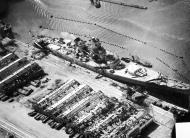
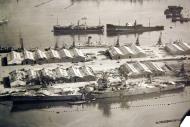


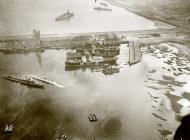









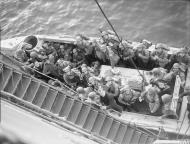

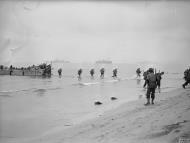






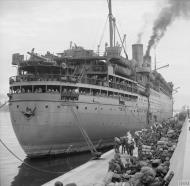





-02.jpg)
-at-Norfolk-Virginia-15th-Oct-1942-80-G-30508.jpg)
-operation-Torch-10th-Nov-1942-80-G-30512.jpg)
-10th-Nov-1942-80-G-30118.jpg)
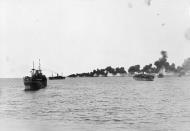

-operation-Torch-Nov-1942-80-G-30312.jpg)
-flies-anti-submarine-patrol-over-the-invasion-convoy-Nov-1942-80-G-30216.jpg)
-flies-anti-submarine-patrol-over-the-invasion-convoy-Nov-1942-80-G-30218.jpg)














-facing-the-cathedral-of-Saint-Mary-Major-in-the-Old-Port-of-Marseille.jpg)
-early-1943-80-G-K-15634.jpg)
-en-route-Nov-1942-NHHC-80-G-30362.jpg)
-during-the-invasion-of-Morocco-8th-Nov-1942-80-G-30244.jpg)
-Oct-1942-01.jpg)





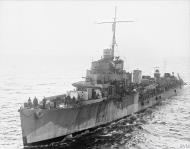
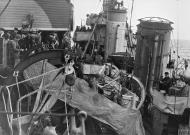
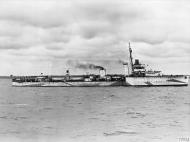


-took-part-in-Operation-Torch-seen-here-in-Feb-1943-IWM-A14575.jpg)
-took-part-in-Operation-Torch-seen-here-sometime-in-1942-IWM-FL22394.jpg)
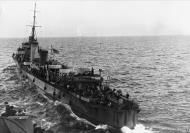





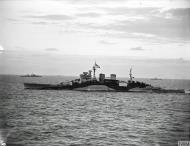



-was-a-Flower-class-corvette-which-was-sunk-by-Luftwaffe-on-19th-Dec-1942-01.jpg)





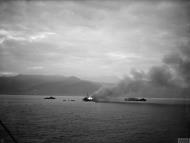
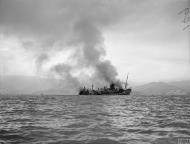


-visits-RAF-322-Wing-at-Bone-Algeria-Nov-1942-IWM-CNA44.jpg)
-operation-Torch-Nov-1942-80-G-30391.jpg)

-01.jpg)
-80-G-30116.jpg)
-80-G-30122.jpg)



-to-USS-Santee-(CVE-29)-Torch-11th-Nov-1942-80-G-30610.jpg)
-Nov-1942-80-G-30628.jpg)



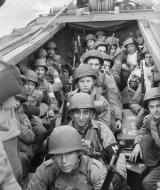



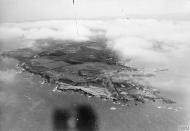
-for-operations-over-Morocco-10th-Nov-1942-80-G-30512.jpg)

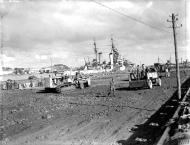


-off-Casablanca-on-8th-Nov-1942-80-G-30414.jpg)


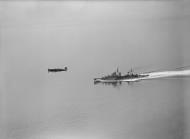



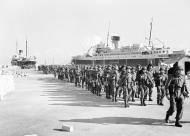

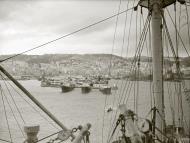
-nr-Bone-Algeria-15th-Nov-1942-IWM-CNA73.jpg)

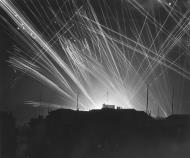
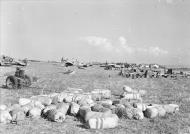




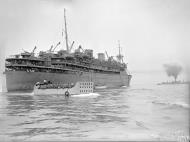




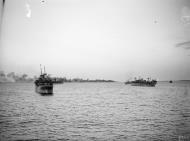

-on-Arzeau-Algeria-IWM-A12671.jpg)
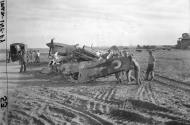



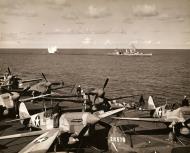





-Admirals-JS-Hall-and-HK-Hewitt-read-a-last-minute-communique-with-MajGen-GS-Patton-Nov-1942-80-G-30442.jpg)
-at-right-near-Fedhala-Morocco-8th-Nov-1942-80-G-30428.jpg)
-at-sea-NH-2204.jpg)
-in-Casablanca-Harbor-Morocco-12th-Nov-1942-SC-242305.jpg)
-Major-General-George-S-Patton-during-operation-Torch-Nov-1942-80-G-30392.jpg)
-radio-room-aboard-the-cruiser-while-en-route-to-Morocco-80-G-30469.jpg)
-did-reconnaissance-patrol-off-Safi-during-operation-Torch-in-Nov-1942-19-N-83952.jpg)
-after-landing-troops-at-Safi-French-Morocco-during-Operation-Torch-Nov-1942-UA01.jpg)
-at-sea-during-the-North-African-invasion-operation-Nov-1942-NHHC-80-G-31434.jpg)
-underway-with-the-invasion-convoy-operation-Torch-Nov-1942-80-G-30637.jpg)
-ferrying-army-P-40F-fighters-to-Morocco-Operation-Torch-Nov-1942-80-G-30221.jpg)
-photographed-during-the-North-African-Invasion-Campaign-8th-Nov-1942-80-G-31435.jpg)
-being-over-flown-by-Grumman-TBF-Avengers-during-Operation-Torch-Nov-1942-S-487-C-001.jpg)
-in-the-Wadi-Sebou-off-Port-Lyautey-Millitary-Airfield-Morocco-11th-Nov-1942-80-G-37245.jpg)
-refueling-from-the-USS-Suwannee-(CVE-27)-Operation-Torch-Nov-1942-01.jpg)
-refueling-from-the-USS-Suwannee-(CVE-27)-Operation-Torch-Nov-1942-02.jpg)
-tasked-with-landing-Army-Rangers-at-Port-Lyautey-Nov-1942-S-414-A-001.jpg)
-at-right-later-sunk-by-U-130-12th-Nov-near-Fedhala-Morocco-8th-Nov-1942-80-G-30427.jpg)
-just-as-she-was-hit-amidships-by-an-enemy-submarine-torpedo-of-Casablanca-12th-Nov-1942.jpg)
-provided-gunfire-support-and-convoy-escort-during-operation-Torch-Nov-1942-80-GK-418.jpg)
-underway-in-the-Atlantic-Operation-Torch-Nov-1942-80-G-K-418.jpg)
-unloading-stores-soon-after-the-landings-at-Casablanca-Morocco-operation-Torch-Nov-1942-80-G-30458.jpg)
-escorting-USS-Sangamon-(ACV-26)-in-the-Atlantic-Operation-Torch-Nov-1942-80-G-K-419.jpg)
-tank-lighters-and-support-craft-at-Casablanca-Morocco-13th-Nov-1942-80-G-30676.jpg)
-in-camouflage-measure-12-modified-off-Charleston-South-Carolina-4th-Mar-1942-NH-53548.jpg)
-in-New-York-30th-July-1942.jpg)
-during-a-lull-in-the-Battle-of-Casablanca-8th-Nov-1942-NH-84534.jpg)
-maneuvering-off-Casablanca-Morocco-during-the-North-Africa-invasion-8th-Nov-1942-80-G-K-2134.jpg)
-a-Benham-class-destroyer-Built-by-Navy-Yard-Boston-Massachusetts-PD-123.jpg)
-receiving-a-salvo-from-the-French-El-Hank-Battery-during-the-Battle-of-Casablanca-8th-Nov-1942-80-G-30422.jpg)
-recovers-one-of-her-Curtiss-SOC-Seagull-during-operation-Torch-Nov-1942-80-G-470059.jpg)
-recovers-one-of-her-Curtiss-SOC-Seagull-during-operation-Torch-Nov-1942-80-G-470060.jpg)
-recovers-one-of-her-Curtiss-SOC-Seagull-during-operation-Torch-Nov-1942-80-G-470061.jpg)
-recovers-one-of-her-Curtiss-SOC-Seagull-during-operation-Torch-Nov-1942-80-G-470062.jpg)
-Grumman-F4F-4-Wildcats-VF-9-9-F-12-on-stand-by-operation-Torch-Nov-1942-80-G-30333.jpg)
-Grumman-F4F-4-Wildcats-VF-9-on-stand-by-operation-Torch-Nov-1942-80-G-30329.jpg)
-rush-aft-to-look-for-a-submarine-during-operation-Torch-Nov-1942-80-G-30299.jpg)
-flight-deck-with-SBD-3-Dauntless-and-F4F-4-Wildcats-Torch-Nov-1942-80-G-470022.jpg)
-flight-deck-with-SBD-3-Dauntless-and-F4F-4-Wildcats-Torch-Nov-1942-80-G-K-15250.jpg)
-refuels-USS-Ellyson-DD-454-at-sea-during-operation-Torch-Nov-1942-80-G-30344.jpg)
-1938-NH-108691.jpg)
-1939-19-N-18698.jpg)
-is-hit-by-a-German-radio-controlled-bomb-during-the-Salerno-operation-11th-Sep-1943-NH-95562.jpg)
-NH-67861.jpg)
-off-New-York-City-with-a-barge-and-tug-alongside-1st-May-1943-19-N-44025.jpg)
-astern-of-USS-Ranger-(CV-4)-escorting-the-carrier-during-Operation-Torch-Nov-1942-80-G-30225.jpg)
-astern-of-USS-Ranger-(CV-4)-escorting-the-carrier-during-Operation-Torch-Nov-1942-80-G-30227.jpg)
-was-torpedoed-by-U-205-was-towed-to-Algiers-harbour-7th-Nov-1942-IWM-A12749.jpg)
-was-torpedoed-by-U-205-was-towed-to-Algiers-harbour-7th-Nov-1942-IWM-A12750.jpg)
-fires-her-8-inch-main-battery-at-French-forces-off-Casablanca-Morocco-8th-Nov-1942-NH-96030.jpg)
-at-anchor-in-Scapa-Flow-with-USS-Wasp-(CV-7)-April-1942-NH-97884.jpg)
-engaging-the-French-battleship-Jean-Bart-off-Casablanca-Morocco-8th-Nov-1942-80-G-38835.jpg)
-operating-as-a-unit-of-Task-Force-Four-in-the-North-Atlantic-during-heavy-swells-Sep-1941-NH-94652.jpg)
-taken-in-1941-participated-in-Operation-Torch-Nov-1942-NH-50245.jpg)
-was-torpedoed-by-U-173-off-Fedala-11th-Nov-under-repairs-at-Casablanca-Morocco-18th-Nov-1942.jpg)

